

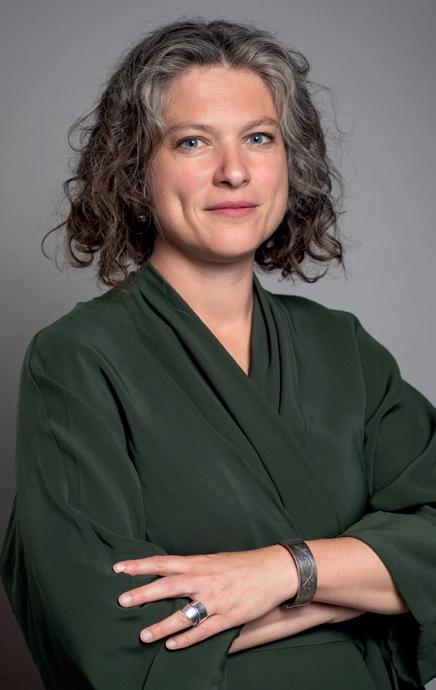
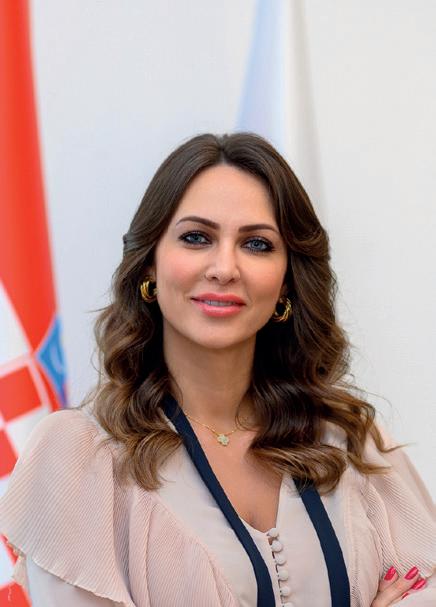
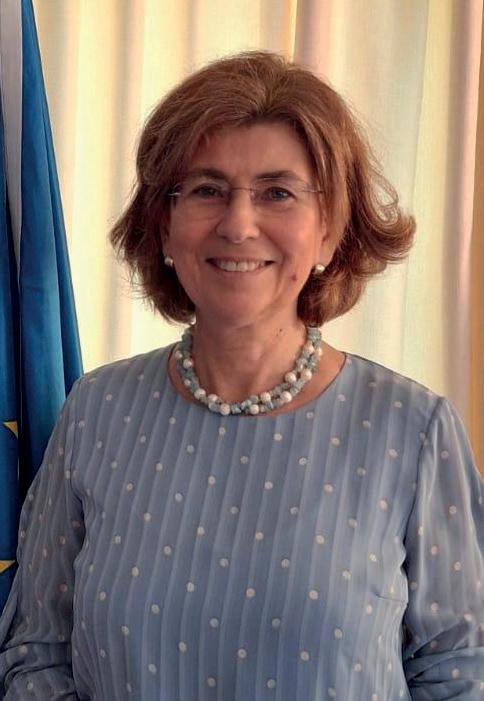
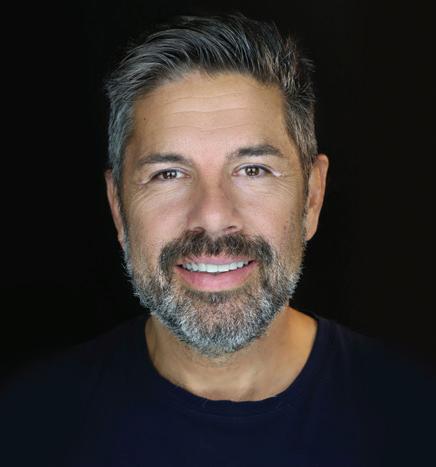
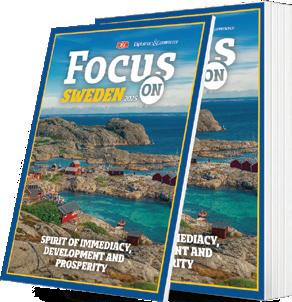

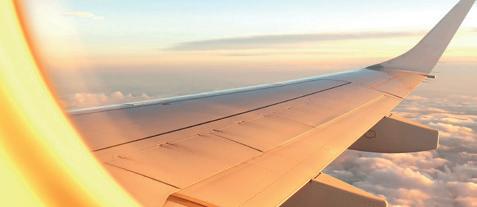
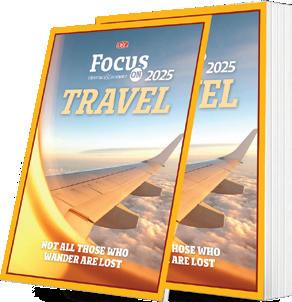
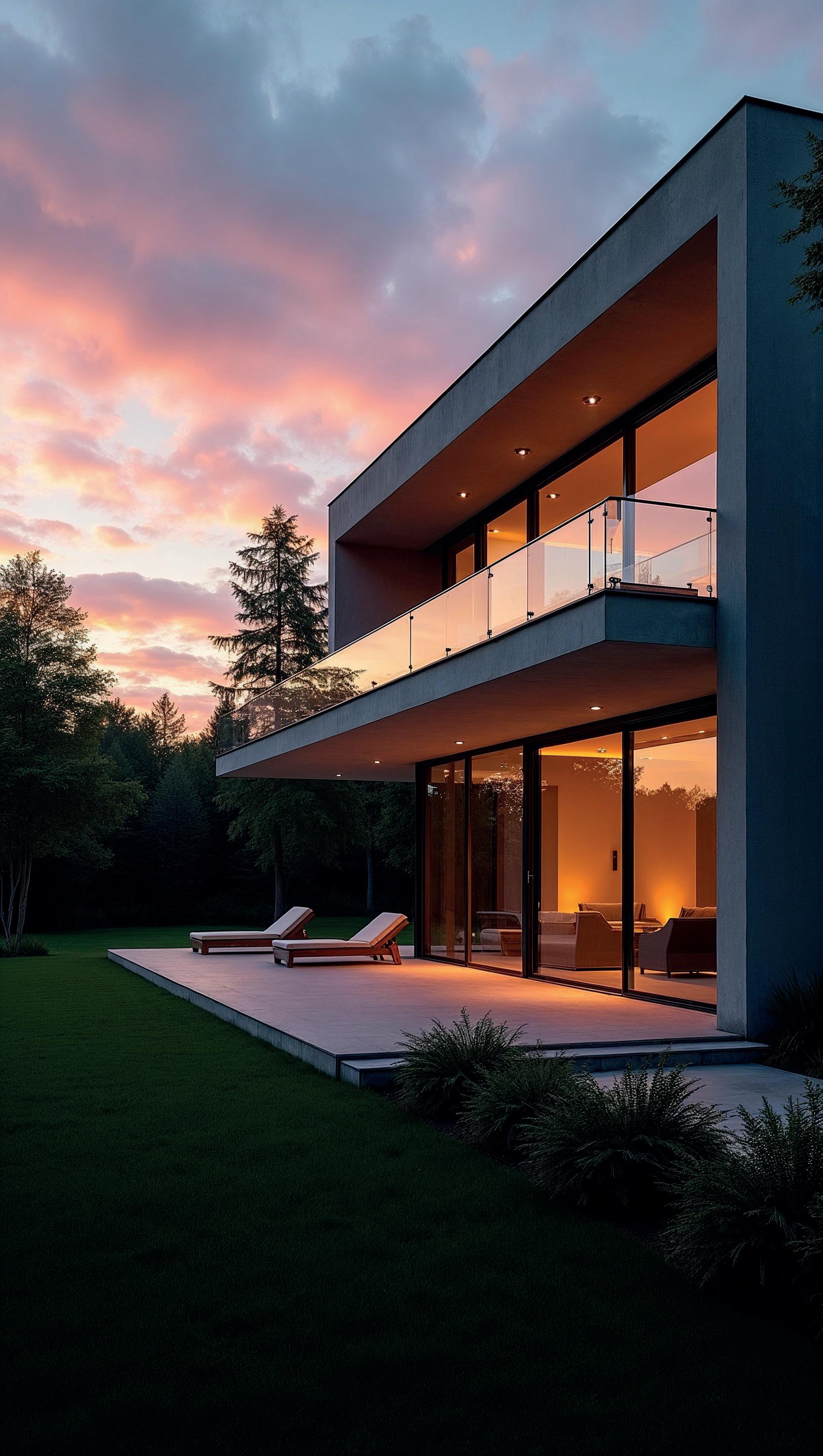



































































FOREWORD
BOBAN SPASOJEVIĆ, Magazine Director Croatia and Editor in Chief boban@diplomacyandcommerce.hr
VLADIMIR DUDAŠ
C e n t r o b i r o Art Director
GORANKA MILOŠEVIĆ Translation
Representative for the Republic of Croatia ASPEKT obrt za savjetovanje i usluge
Owner of the license/ magazine name Diplomacy&Commerce
ROBERT ČOBAN Director
BOBAN SPASOJEVIĆ Director and Editor-in-Chief
CONTENTS

14
CONNECTING YOUNG PEOPLE AS A PLEDGE FOR THE FUTURE ZVONIMIR FILIPOVIĆ University of Applied Sciences “Lavoslav Ružička” Vukovar
28
VILLI NAI 3.3 – LUXURY WHERE SKY IS THE LIMIT, COMBINED WITH CAPTIVATING TRADITION GORAN MOROVIĆ Entrepreneur, owner of Villi Nai3.3 Hotel

Dear readers,
It is my pleasure to present to you new, 56th , edition of Diplomacy&Commerce magazine. This time, now traditionally, with a special summer supplement Focus on Travel. Knowing you, your habits and needs, we tried our best this time to present you the better and different, quality beyond mass consumption, related to destinations, hotels, accessories and everything related to travel and summer. Also, June is the month when many countries and embassies celebrate their National days. You will see some of them in our People&Events section, and this time we had the pleasure and opportunity to present Sweden in mini supplement Focus on Sweden, as a friendly and partner country to Croatia. I believe you will enjoy reading what we have worked hard on for you. After summer we have an autumn edition, which will also be a birthday one, when we celebrate 8 years of the magazine being published in Croatia. The Diplomacy&Commerce team wishes you a pleasant summer!


32
BUILDING IS NO LONGER ENOUGH – WE MUST CREATE WITH VISI
MARTINA JURJEVIĆ CEO Westgate Group
36
PAY AND ENJOY THE MOMENTS WITH VISA RENATA VUJASINOVIĆ Country Manager, Visa Croatia


40
CROATIA’S MOST ATTRACTIVE FAMILY DESTINATION
ARBA RESORT 4* VALAMAR COLLECTION
42
HYPERLIGHT EYEWEAR KATA PAVLOVIĆ Zepter Croatia CEO

H.
There is potential for further development of mutually beneficial businesses in areas such as digitalization, renewable energy, agriculture, science or health
MARIA MANUEL DURÃO
Ambassador of Portugal in Croatia
Croatia is a very popular destination for the Portuguese, not only in terms of tourism, for the holidays, but also to study and go on ERASMUS, for Diplomacy&Commerce says H. E. Maria Manuel Durão , Ambassador of Portugal in Croatia. The coast and islands of Croatia have an excellent reputation in my country, from Istria through Dalmatia to Dubrovnik, says Mrs Manuel Durão. In an exclusive interview for our magazine, she reveals the possibilities of economic cooperation between Croatia and Portugal, as well as cultural ones that are in the embassy’s plans.
Croatia and Portugal are two relatively similar countries. Both base a large part of their development on tourism, they are members of the EU, NATO. How would you assess the relations between the two countries?
Portugal recognized Croatia’s independence on the 15th of January, 1992, coincidentally during the Portuguese Presidency of the European Economic Community. Diplomatic relations between the two countries were established soon after, on the 3rd of February of the same year. During these more than 30 years, the relationship has been very friendly and increasingly closer, both bilaterally and, since 2013, also as members of the European Union and as partners of the Schengen Area in 2023. In the European Union, the two countries, recognizing the importance of the European project, share common goals and challenges, and defend the values of cohesion, human development, and solidarity. In fact, the successful cooperation between our two countries during our respective EU Presidencies has been a testament to the deep mu-

ACCORDING TO THE WTO, IN 2023, PORTUGAL WAS THE 15TH RECEIVING MARKET FOR TOURISTS AND 9TH IN EUROPE (26.5 MILLION). DATA FOR 2024 CONFIRM THIS DYNAMISM, POINTING TO MORE THAN 30 MILLION GUESTS
tual understanding between them and their capacity of collaborating at EU level. Also as NATO partners, both Portugal and Croatia share the core values of the alliance, such as collective defence, democracy and respect for the rule of law. But if we return to older times, historically, we cannot forget the close ties between Portugal and the then Republic of Dubrovnik, both seafaring peoples. This connection with the sea is one of the characteristics that define our people and a fundamental cultural element that brings us closer.
Are there any “issues” between the two countries and what would you single out as the most important or challenging in the development of relations between the official Zagreb and Lisbon? The truth is that over these 33 years we have not registered any specific challenges to our relations. Of course, there is always room for improvement, and that is always our ambition: to further strengthen bilateral relations at the political, economic and cultural levels, and to deepen our cooperation in the context of the European Union, NATO,
the United Nations and other multilateral forums with an international dimension, where we often share the same views. And it is in this sense that we have been working, not only in order to improve and update the framework instruments around our cooperation, but also to intensify contacts and visits at the most varied levels, with a view of multiplying our exchanges, namely regarding trade.
Economic cooperation is the most important segment of the development of relations, in addition to political prerequisites. What do the numbers show, how developed is it, which areas and where do you see room for improvement?
Economic cooperation is probably one of the areas that is most challenging nowadays. Our relationship in this domain has not been particularly strong and our trade figures are below what we would like to have. It is true that the two countries are located at opposite sides of Europe and their focus may be on other geographically or historically closer markets, but this should not necessarily represent an obstacle. Rather, it should be seen as an opportunity for our countries to get to know each other better. And it is in this sense that we are working to try to bring companies together by arranging business meetings to promote information and experience exchanges on both sides, so that the areas of common interest can be identified, investment can be fostered, and trade can be strengthened. There is certainly potential for further development of mutually beneficial businesses in areas such as digitalization, renewable energy, agriculture, science or health. And there are already very successful projects underway that we strongly encourage, such as the collaboration between the Croatian municipality of Benkovac, in the county of Zadar, and the Portuguese city of Alenquer, in
the wine sector, which can be an important asset for both countries. This is an area of mutual interest where cooperation could also be intensified. As for tourism, flows between the two countries have also been growing.
We mentioned tourism. Portugal is a tourist superpower. Last year, 26.5 million foreign tourists visited your country, which is the most in history. Compared to 2022, the number of tourists increased by 19.2 percent. What is the development of your tourism based on and do you see any link with Croatian tourism?
Tourism in Portugal has indeed shown a remarkable recovery after the impact of the COVID-19 pandemic and continues to assert itself as one of the pillars of the Portuguese economy, stimulating not only economic growth, but also the enhancement of territories and communities. Portugal has attracted more and more visitors, driven by urban tourism, nature tourism and the appreciation of gastronomy and wine tourism. According to the World Tourism Organization, in 2023, Portugal was the 15th receiving market for tourists and 9th in Europe (26.5 million). Data for 2024 confirm this dynamism, pointing to more than 30 million guests, and in 2025 this growing trend is expected to continue. This is of course a very high number of tourists in proportion to the Portuguese population. Croatia faces a similar challenge. Therefore, particular attention has been paid to the potential negative impacts of this, namely at the environmental level, and Portugal has been implementing several initiatives to promote sustainable tourism practices, such as encouraging rural and ecological tourism. It has also invested significantly in the digitalization of the sector, with the implementation of advanced technologies to improve the tourist experience and the operational efficiency of tourism services. After some difficulties in the past, Portugal has sought to take a proactive approach to risk management and in the implementation of strategies to increase the resilience of the tourism sector, including the continuous training of tourism professionals and the creation of an emergency fund for the sector. Conscious of the importance of tourism and its contribution to promote broader friendly relations, Portugal and Croatia signed an agreement which constitutes the legal framework of their cooperation in this field.

IT IS WITH GREAT SATISFACTION THAT I HAVE BEEN SEEING THE INTEREST AND CURIOSITY OF CROATIANS REGARDING PORTUGUESE CULTURE
How well do Portuguese people know Croatia and what do you recommend to them when they ask you when they want to come, what to visit, what to try? In this regard, what do you recommend to all of us who are planning to visit Portugal to try, see?
The connection with the sea, so important for our two peoples, is always very attractive. But, in addition to the Coast, I always recommend the Plitvice Natural Park, which is absolutely wonderful, or the region of Krapina and Varazdin. Recently I went to Baranja and I also found those very green and fertile plains extremely beautiful.
Throughout the country I have been warmly welcomed and have been experiencing the excellence of the gastronomy, which makes the stay in Croatia very pleasant.
As for Portugal, it is a country with a great diversity of landscapes and historical heritage, found not only in large cities, such as Lisbon, Porto, Coimbra or Évora, but also
in small towns or villages. The city of Guimarães, the “cradle of Portuguese nationality”, which last year signed a cooperation agreement with Varazdin, or the village of Arouca, in the North, where there is a beautiful baroque monastery and which has been developing a partnership with the Castle of Trakoscan, are places I highly recommend. For beach lovers, in addition to the multiple beaches along the Atlantic coast, there are beautiful river beaches. Not to be missed is also a boat trip to enjoy the landscape of the Douro wine region, declared a UNESCO world heritage site. The Portuguese gastronomy, rich and varied, like its landscape, also offers visitors a unique experience.
I think that the Portuguese and Croatians are aware of the beauty of both countries because the tourist flows between Croatia and Portugal have been growing consistently in recent years, and I hope that this trend will continue in the

future, and that it can be facilitated by the re-establishment of direct flights between the two countries.
Cultural cooperation and exchange is very important for getting to know other peoples and understanding similarities and differences. What would you highlight from the Embassy’s plans in this field?
It is with great satisfaction that I have been seeing the interest and curiosity of Croatians regarding Portuguese culture. And the activities that we have been developing in this area have been very diverse: from music to cinema, photography, dance or literature, we try to carry them throughout Croatia. The Embassy prepares an annual plan of cultural activities in which, in addition to trying to ensure Portuguese participation in various festivals that take place here in Croatia, it also includes initiatives with specific partners, Croatian entities or other countries, as well as commemorative events of specific dates, thus trying to make our history and culture known. We were, for example, the partner country of the 54th Varaždin Baroque Evenings last year, which was an honour for us, and which allowed us to present a set of shows and exhibitions very representative of Portuguese music and art. We have also been participating in the Sibenik Dance Festival, and this year we organized two film cycles, in partnership with other Portuguesespeaking countries, in Zagreb and Karlovac, to mark the World Portuguese Language Day. And we have been sponsoring several events in the area of literature. The learning of the Portuguese language is also a priority for us, not only at university level but also at the secondary school level. We therefore maintain good and strong relations with the University of Zagreb, where there is a Chair (Catedra) of Portuguese, with excellent professors, and where we also provide a lecturer. But also with universities in other cities, where in some of them, for instance in Zadar, Portuguese language classes will soon start again. With several high schools, with which we have cooperation protocols, we also try to maintain close contact.
These cultural exchanges between Portugal and Croatia, which we will continue to promote, have naturally contributed to an enrichment of the ties between our two peoples, arousing greater curiosity for knowledge of our respective countries.



JUNE 11th
The birthday of King Charles III was celebrated at the residence of the British ambassador
Traditionally, in June, the residence of the British ambassador in Zagreb is the place where a large number of

JUNE 13Th
guests gather to celebrate the sovereign’s birthday as well as the friendly relations between Croatia and UK. It was also the fare-

In the beautiful surroundings of the Klovićevi dvori Gallery, along with numerous partners from various institutions, colleagues from diplomatic missions, companies and friends, the tradition-

JUNE 17th
Tal Swiss Evening was celebrated. It was another opportunity and confirmation of the friendship between Croatia and Switzerland A special moment of the evening was the emotional address of Ambassador Ursa Ham-

of
he celebration was organized by the Embassy of the Republic of Slovenia and the SLO-CRO Chamber of Commerce. The event was held in the impressive
ambience of the atrium of the Archaeological Museum in Zagreb and brought together more than 400 guests – members of the diplomatic corps, representatives of the Slove-
well party for Ambassador Simon Thomas, who is being succeeded in this position by Mr. Javed Patel.
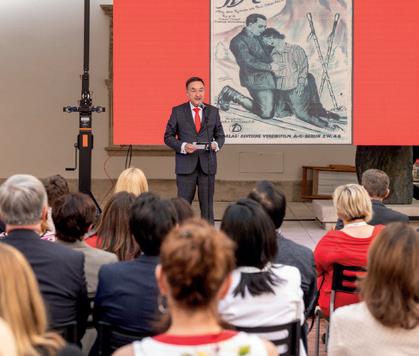
mer, who reflected on the past three years of his exceptionally rich mandate and announced his imminent well-deserved retirement. The new Swiss ambassador to Croatia is expected in September this year.

nian community in Croatia, businessmen from both countries, and numerous members and partners of the SLO-CRO Chamber of Commerce.
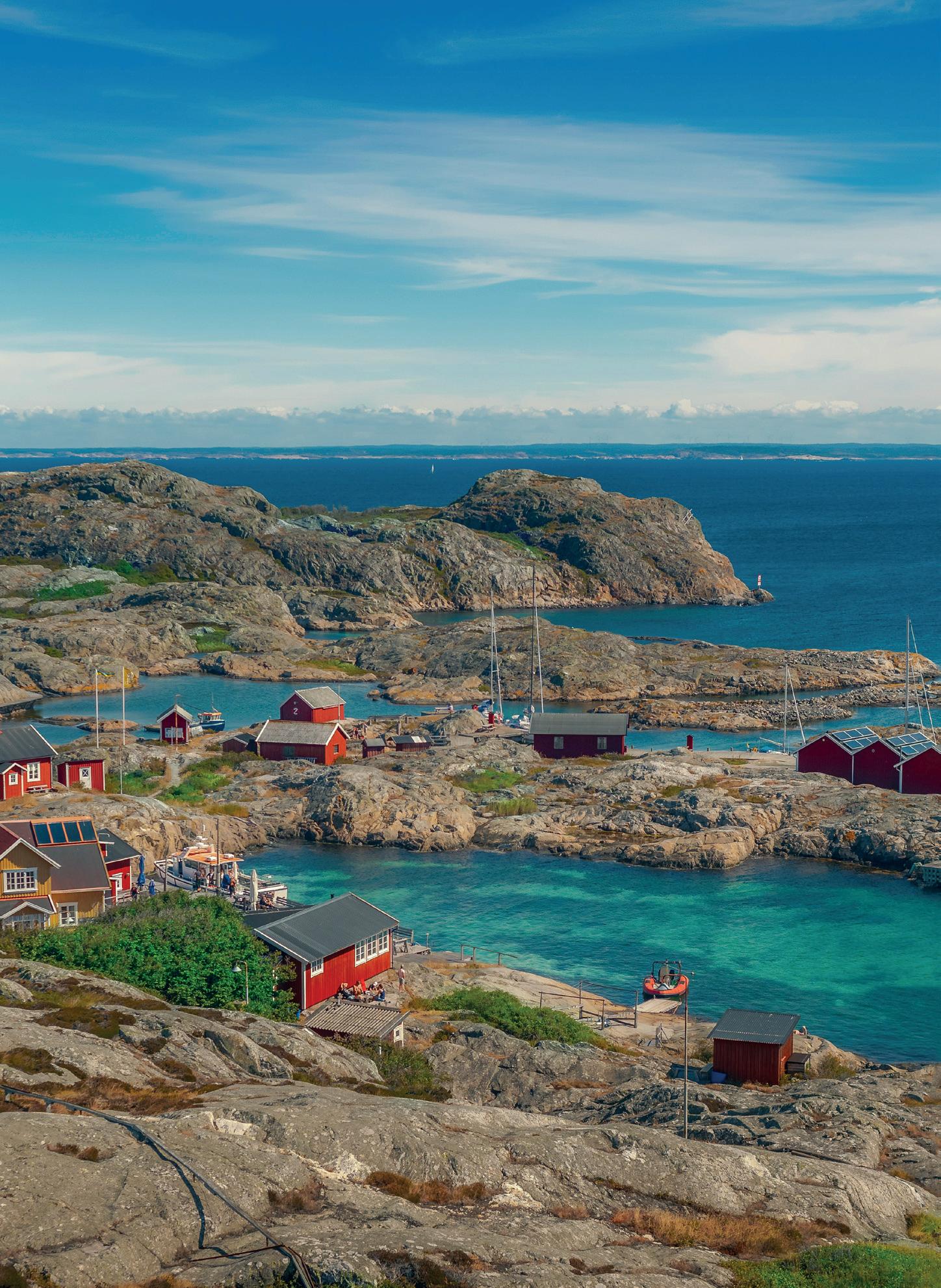
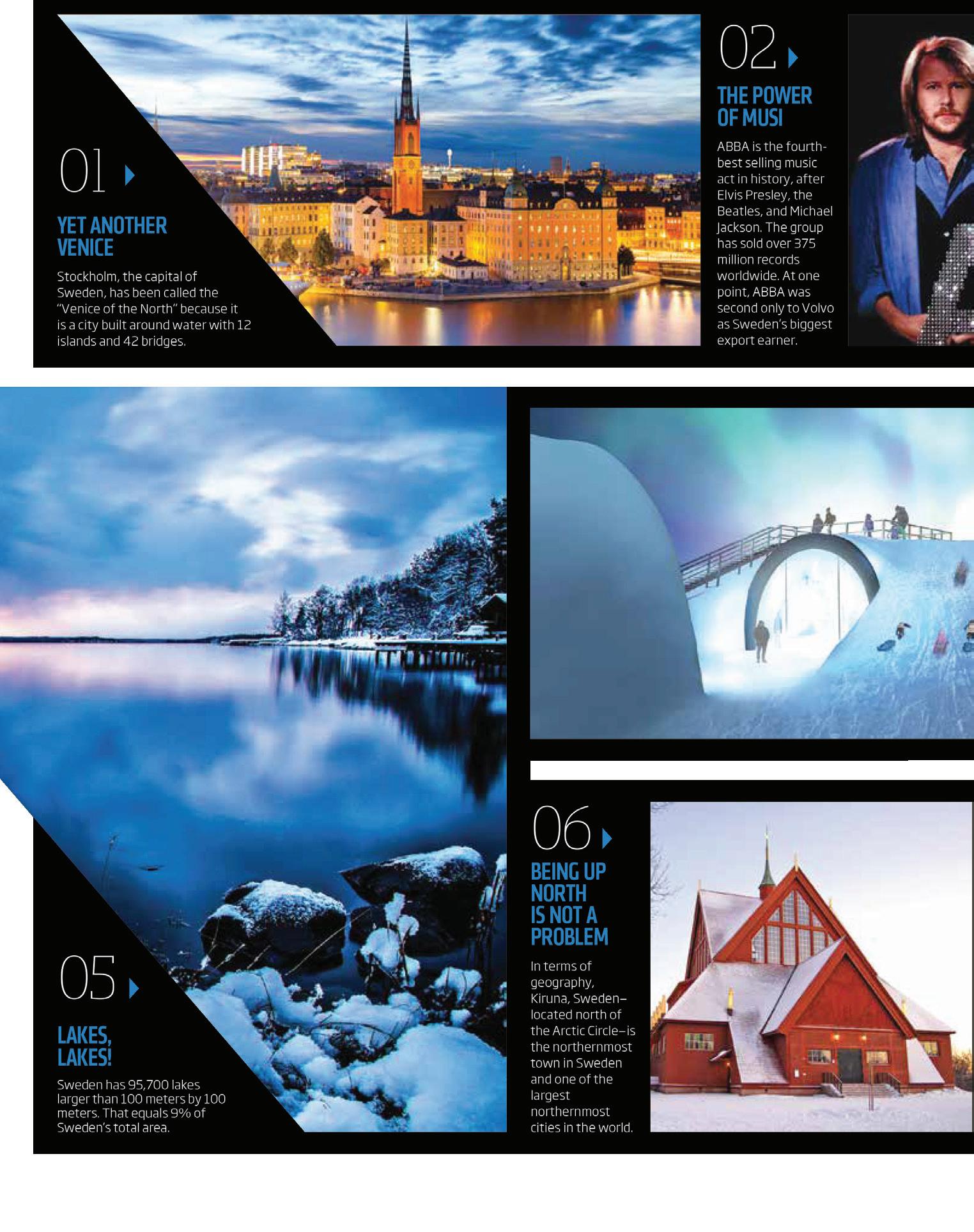

It has become sharper and more unpredictable
H. E. ANNA BODA
Ambassador of Sweden to Croatia
We – Sweden and Croatia – are working together in the EU and in NATO for our common security and future, for Diplomacy&Commerce says Anna Boda, Ambassador of Sweden to Croatia. We also talked about business opportunities and cooperation between the two countries. There are some 50 Swedish companies active in Croatia, which employ over 10,000 people.
After almost 2 yrs in Zagreb representing the Kingdom of Sweden, what would you single out as the most significant changes in the relationship between the two countries, bearing in mind that both countries are now members of the EU and NATO?
Russia’s aggression against Ukraine continues, posing a serious security threat to Ukraine, to Europe and beyond. How this war ends will be formative for European security for generations to come.
Sweden is convinced that we need to further increase our support for Ukraine. We need to boost our military defense and take bigger responsibility for our own security, in Sweden as well as in European NATO. We need to increase European competitiveness. These tasks make our partnership and alliance with Croatia even more important.
Furthermore, both Sweden and Croatia believe that EU enlargement is a geostrategic investment in peace, democracy, security and prosperity. It is in our interest to support the candidate countries to move closer to the Union, by making the reforms needed.
After the political understanding of common values, the economy is the most important part of the relationship between the two countries. In the SwedenCroatia relationship, you have the advantage. Do you see changes when we talk about investments, where are they now directed?
Croatia’s strong economic growth, investment-grade credit ratings, and efforts to attract FDI, coupled with

APPROXIMATELY 300.000 SWEDISH TOURISTS VISIT CROATIA EVERY SUMMER
Sweden’s continued focus on internationalization and sustainable technology, suggest promising continued cooperation.
In essence, the business cooperation between Sweden and Croatia is robust, characterized by established trade, significant Swedish investment, and a proactive approach to fostering new partnerships, particularly in areas of innovation, technology, and green solutions.
Key opportunities for collaboration include green transition, where Sweden offers expertise in sustainable innovation and Croatia provides renewable energy potential and EU funding. Digitalization is another promising sector, leveraging Sweden’s advanced digital society and Croatia’s growing IT talent and digital transformation initiatives. Finally, with both countries being NATO Allies, defense industry and
security cooperation has significant potential. This strategic alignment promises continued and deeper collaboration across vital sectors.
In addition to the Embassy, there is also an active Swedish Business Club in Zagreb, which gathers and helps businesses to come and develop as successfully as possible. What do the numbers show, how much is the exchange between the two countries, in which areas, where do you see room for improvement?
There are some 50 Swedish companies active in Croatia, they employ over 10,000 people and contribute to bilateral trade, which has reached
approximately € 538 million in 2024, with Croatia exporting € 240 million worth and services to Sweden and importing € 298 million from Sweden.
Sweden ranks 16th among Croatia’s top foreign investors, having invested more than €780 million since 1993 in a wide range of industries, from wood and furniture to life sciences and health, and from tourism and wine to ICT and engineering.
The Swedish Business Club (SBC), launched in 2018 with the Embassy’s support, gathers Swedish companies in Croatia and serves as a platform to connect the firms with each other, deepen local ties, foster innovation, and promote common values—such as sustainability, equality, and transparency.
It is worth mentioning that the Swedish medical-tech firm Elekta signed a €32 million agreement in January 2024 to supply Croatia with 12 linear accelerators, significantly enhancing the cancer care capacity in Croatia.
Moreover, Croatian engineering firm Končar as well as the company Dalekovod-Projekt have secured multi-million euro contracts in Sweden in the past couple of years.
What do the Swedes know about Croatia? What would you recommend to your friends to visit, try here? And what would you recommend to us to visit in Sweden?
Swedes know a lot about Croatia. Primarily because approximately 300.000 Swedish tourists visit Croatia every summer, but also because we have significant number of people who emigrated from Croatia to Sweden from the 1960’s for work and in the 1990’s due to the war. Many Swedes know Croatia for its stunning Adriatic coastline, historic cities like Dubrovnik and Split, and its popularity as a summer travel destination. They also recognize Croatia for its strong handball and football teams, as well as its rich cultural heritage and Mediterranean lifestyle.
For those visiting Sweden I would recommend the northern part of Sweden where you can enjoy the unique Midnight Sun in the summer or the spectacular Northern Lights during winter. Stockholm offers a mix of urban adventures and centuries-old history, with the archipelago just a boat ride away. Dalarna is the place to go for a traditional Midsummer celebration. Southern Sweden is a popular holiday destination for Swedes. Öland and Gotland offer historical sites, unique nature, and local flavors. Skåne is known for its yellow canola fields and local produce, while Malmö boasts progressive cuisine.

The west coast, including Gothenburg and its archipelago, provides seafood, outdoor adventures, and stunning views.
In our region, Sweden is considered as a country of prosperity, where everything works as it should. What would you single out as the most memorable part of Swedish culture and art that leaves the strongest impact on others?
Sweden’s strengths as a country and a society are expressed in many ways – from our business climate and our powers of innovation to the way we approach education, culture and international cooperation. Sweden’s competitiveness is rooted in our strong democracy, individualism and creativity.
I would say that a key aspect of Swedish culture and art is its deeprooted commitment to simplicity, functionality, and sustainability. This is especially evident in Swedish design and music. Swedish design, known globally through brands like IKEA, H&M and iconic designers like Bruno Mathsson or Greta Magnusson Grossman, blends minimalism with practicality in a way that resonates with people. It is generally appreciated for its clean lines, human-centered thinking and harmony with nature.
In music, Sweden’s global influence is exceptional for a country of
our size. From ABBA to modern pop producers like Max Martin and Eurovision song contestants, Swedish music consistently shapes international soundscapes.
Innovation and education are something that seems quite important to you as a country. What is the importance of innovation and education in everyday life and what would you advise young people and others when we talk about it?
I think it’s worth recalling that in 1870 we were one of the poorest countries in Europe. 100 years later we are one of the richest. Ever since, we have known that everything is possible. It requires hard work and openness to change. It demands the ability to see that challenges can also mean opportunities to become more innovative, more entrepreneurial and more efficient. We have learnt that new technology can provide a new chancenot a threat - especially with access to re-skilling and up-skilling of the labor force. Competitiveness and a growing economy have always been critical for the success of the Swedish Model. At the basis of this, four factors have been decisive for Sweden’s innovation success.
First, education for all – not for the few. Second, making the most of technology transformations such as industrialization, electrification
and digitalisation. Third, deregulation, free markets and free trade – we don’t believe in tariffs, not even those that would protect our businesses. And last but not least: understanding that to build great and growing companies you need to be able to compete globally.
This is how innovation became a national virtue. This always stems out of people, another supporting factor is that Sweden’s collective R&D spending amounts to more than 3.5 percent of GDP, most of it from the private sector. As you can tell, we have a deep-rooted belief in the power of education and research, and in public-private partnerships.
You recently celebrated your National Day in Zagreb. How do Swedes celebrate that Day at home and other similar holidays? Swedes celebrate our National Day on June 6 with a mix of official ceremonies and relaxed community events. The date, 6 June, stems from two important events in the history of Sweden: Gustav Vasa was elected king on 6 June 1523, which laid the foundation for Sweden as an independent state, and Sweden adopted a constitution on 6 June 1809 which laid the foundation of our modern democratic state, through a division of power. Some Swedes also say that Midsummer – the longest day and shortest night of the year – is actually our informal National day celebration, which is surrounded by even more traditions as we are so dependent on the light and its impact on our well-being, agriculture, social lives etc.
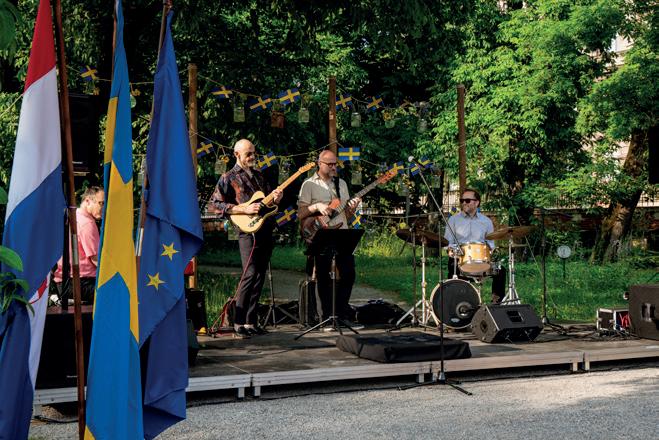



The Embassy of Sweden in Croatia hosted a vibrant celebration of Sweden’s National Day on June 5th in the picturesque setting of the Botanical Garden in Zagreb.

The event brought together more than 300 invited guests, including members of the diplomatic corps, Croatian government and parliament representatives, business leaders, representatives from academia, culture and media, Swedish alumni and friends of Sweden.
THIS YEAR’S CELEBRATION MARKED 33 YEARS OF DIPLOMATIC RELATIONS BETWEEN THE TWO COUNTRIES
The celebration featured jazz quartet, traditional Swedish summer cuisine, and Swedish companies that showcased their latest innovations and offerings to attendees. The event opened with remarks by the Swedish Ambassador to Croatia, Anna Boda who emphasized the strong and growing ties between Sweden and Croatia.
This year’s celebration marked 33 years of diplomatic relations between the two countries and served as a moment to reflect on shared values of democracy, rule of law, sustainability, and cultural exchange.
The gathering continued into the evening with live performances, Swedish cocktails, delightful ice cream, a lively wheel of fortune, and an interactive message wall for guests to share their thoughts on Sweden, all set within the serene garden atmosphere.



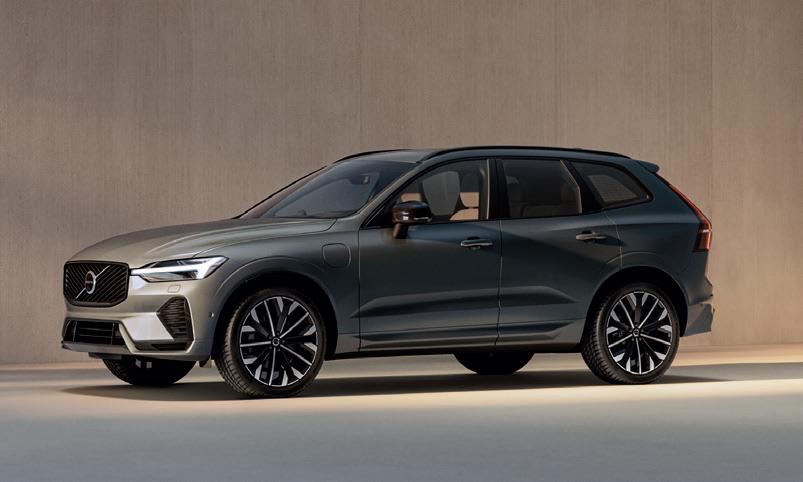
From city streets to country roads, the Volvo EX30 and XC60 are made to move with you—offering two distinct ways to experience the world with Scandinavian style, intelligent design, and uncompromising safety.
The EX30 is our compact electric SUV that’s big on innovation. With quick charging, a spacious interior, and a bold design inspired by Scandinavian nature, it’s proof that great things come in small packages. Minimalist yet expressive, the EX30 is perfect for urban adventures and everyday versatility.
The XC60 brings elevated comfort and confidence to your daily drive. As a premium midsize SUV, it blends refined design with advanced technology and practicality. Whether you’re navigating busy city traffic or heading out for a weekend getaway, the XC60 adapts effortlessly to every journey.
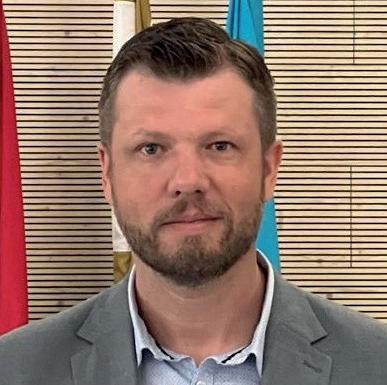
University of Applied Sciences
“Lavoslav Ružička” Vukovar
How important education and the common future of young people in the border regions of Croatia and Serbia is, is best demonstrated by the project, which is being implemented in several phases and is financed from EU funds. Zvonimir Filipović, project manager from University “Lavoslav Ružička” from Vukovar, explains to Diplomacy&Commerce what are the specifics of the project itself, the phases of its implementation and how those for whom it is intended react on the ground. He also points out the importance of business circles, especially the Croatian Business Club in Serbia, for inclusion in such stories.
University of Applied Sciences
“Lavoslav Ružička” in Vukovar is the leading partner in the Republic of Croatia within the project “Education Program in the Field of Preparation and Implementation of European Projects from EU Funds”. What is the goal of the project?
Through education, workshops and networking, the project encourages cross-border cooperation, strengthening competencies and the development of sustainable local initiatives that can be financed from EU funds. The project represents an extremely important step forward in the development of local communities on both sides of the border, as it not only raises the level of knowledge and skills of young and educated individuals, but actively involves them in shaping the future of their own communities. Through the system-
The aim is to strengthen the capacities of young people, students and stakeholders in the Croatia-Serbia border area for the preparation and implementation of EU projects
atic implementation of educational programs and practical workshops, participants gain concrete knowledge about European funds, preparation of project proposals and project management, which makes them more competitive in the labor market and more ready to engage in international initiatives. Also, the project emphasizes the importance of creating a network of cooperation between the
tion, forums and joint meetings, and is intended primarily for students, young entrepreneurs, members of local communities and the civil sector. “On the ground” means concrete education in Vukovar and Belgrade, transfer of knowledge about EU funds, building local project teams and networking with relevant actors on both sides of the border. It is through the combination of
CROATIA CAN HAVE AN ACTIVE MENTORING ROLE IN THE REGION, AND SERBIA GETS THE OPPORTUNITY TO LEARN THROUGH PRACTICAL EXAMPLES AND JOINT ACTIVITIES
academic community, the public sector, business entities and civil society, which in the long term provides a stable and sustainable platform for the development of cross-border projects. Through networking and exchange of experiences, the foundations for new forms of partnership, innovative approaches to local development and joint action aimed at European integration and better socio-economic inclusion of young generations are created. The project contributes to the strengthening of institutional and human capacities, and spreads the vision of a common future, based on knowledge, solidarity and sustainable development.
As a project manager, what can you tell us about the details: what does it look like, what does it entail, and what does it specifically mean “on the ground”? Who is it intended for? The project consists of a series of activities such as workshops, educa-
theoretical knowledge and practical application that the project realizes its full potential, providing participants with essential information and concrete tools for action. Special emphasis is placed on field implementation, because through direct presentation of the topic, whether through simulations of project applications, real examples of good practice or meetings with successful EU project holders, a deeper understanding and motivation for one’s own involvement in the development of the community is achieved. This approach enables young people from border areas to build a network of acquaintances and partnerships and develop the skills necessary to independently lead project initiatives, which ultimately strengthens the resilience of local communities and increases their competitiveness in the European context. In this way, the project becomes an educational and transformational tool that directly contributes to positive social
changes and long-term strengthening of cooperation between the two neighboring countries.
At the end of May, you organized a joint Forum of all Project participants and external stakeholders in Dubrovnik, as part of the International BEE Entrepreneurship Conference. Who are all the participants and what is their role in the project? The participants of the Forum were representatives of the University of Applied Sciences “Lavoslav Ružička” from Vukovar as the lead partner, members of the Ministry of Foreign Affairs, representatives of the Croatian Business Club from Belgrade, students, young entrepreneurs and international guests from Greece and other countries. Their role is manifold, from educators and facilitators to partners and end users. A special value was given to the Forum by students and young entrepreneurs who had the opportunity not only to listen passively, but also to actively participate, ask questions and engage in discussions, which confirms the strong educational and motivational dimension of the project. Also, the presence of international guests, such as my colleague from Greece, further emphasized the European dimension of the project and opened the door for future transnational collaborations within programs such as INTERREG VI-B IPA ADRION 2021–2027.
The next phases of the project implementation are a workshop in Vukovar in October and an educational program in Serbia in November 2025. What have you planned for the workshop and what for the program in Serbia?
The workshop in Vukovar is scheduled for October 2025 and will focus on the practical aspects of preparing project proposals and empowering local implementation teams. The program in Serbia, which will be held from November 21 to 23, 2025, will be a continuation of education with an emphasis on implementation, reporting and project management, with an emphasis on the application of joint proposals for future tenders. These two activities are key operational phases of the project because they enable participants to understand the theoretical foundations of EU funds and concrete application through structured workshops, practical exercises and simulations of real project applications. The workshop in Vukovar will be an opportunity to build solid student teams that, with professional mentorship, will develop their own project ideas and learn how to shape them into formal proposals ready for the competition procedure. The program in Serbia will further deepen the acquired knowledge and focus on the challenges that project teams face in the implementation, administration and reporting phases. In addition, the focus will be on building joint project proposals that will be able to apply to crossborder and international calls in the future, such as those from Interreg and IPA funds. By jointly participating in both activities, participants from Croatia and Serbia will acquire practical skills, develop mutual trust, partnerships and long-term cooperation, and this is one of the most important goals of the entire project.
The forum was additionally enriched with presentations on sustainable development and the possibilities of inclusion in the new international project INTERREG VI-B IPA ADRION 2021–2027. What can you tell us about this new project?
The INTERREG VI-B IPA ADRION 2021–2027 project is aimed at encouraging cooperation between EU member states and candidate countries, with an emphasis on sustainable development, innovation and smart specialization. The forum in Dubrovnik served to present this project and invite all partners to get involved in future project initiatives. Inclusion in the ADRION project will enable the continuation of crossborder cooperation and additional sources of funding for innovative projects. This ambitious programme represents an exceptional opportunity for regions that want to actively participate in shaping sustainable, inclusive and smart development in the Adriatic-Ionian region. Through

THE PROJECT CONSISTS OF A SERIES OF ACTIVITIES SUCH AS WORKSHOPS, EDUCATION, FORUMS AND JOINT MEETINGS
an integrated approach that connects innovation, green policies and territorial cohesion, ADRION encourages development projects that have a strong regional and international impact. The presentation of this project at the Forum in Dubrovnik came at the right time, because the gathered partners, experts and representatives of educational and business institutions recognized its potential and expressed their readiness for active involvement in future project proposals. Joining ADRION opens up the possibility of continuing existing forms of cooperation and strengthening capacities to solve common challenges such as climate change, digital transformation and strengthening the innovation potential of local communities.
How important is this kind of cooperation in bringing two neighboring countries and people together, bearing in mind that one is a member of the EU, and the other wants to become one? What are the most common problems when implementing such projects?
Such cooperation is crucial for the transfer of knowledge, the creation of trust and the strengthening of institutional and interpersonal relations. The most common problems are administrative obstacles, different levels of preparation of institutions, but also time constraints for the implementation of planned activities, especially when it comes to financing with precise deadlines and rules. That is why such projects have a
deeper mission, they transfer technical knowledge and skills, contribute to the creation of lasting connections between institutions and individuals, thus building the foundations of stable and long-term cooperation. By working together on specific goals, mutual understanding, tolerance and mutual respect are developed, which ultimately contributes to the political and social rapprochement of the two countries. Given the fact that Croatia is a member of the EU and Serbia is a candidate country, such projects also serve as a kind of platform for the transfer of experience in accession processes, fund management and institutional strengthening. In this way, Croatia can have an active mentoring role in the region, and Serbia gets the opportunity to learn through practical examples and joint activities. Despite challenges, such as administrative differences, demanding project documentation or timelimited deadlines, we have shown that with good coordination, mutual understanding and a common vision, goals can be successfully realized and concrete progress can be made on the ground. In this sense, each such project further strengthens the foundations of future cooperation and strengthens the idea of a common European future of the region.
How useful and important is the cooperation with the Croatian Business Club in Serbia to you, and what is their role in these and other projects you are working on? Cooperation with the Croatian Business Club in Serbia is extremely
important, because they represent a point of contact, provide support and form a bridge to the business community in Serbia. Through its members and the president, Mrs. Marija Radulović, actively participate in the organization of events, connecting partners, promotion and implementation of project activities, thus contributing to the overall success of projects and strengthening interstate cooperation. Their partnership role in this project also contributes to the longterm positioning of the University of Applied Sciences “Lavoslav Ružička” in Vukovar as a reliable and open institution at the international level.
All these project steps would not have been possible without the strong institutional support given, from the very beginning, by the Dean of the University of Applied Sciences, doc. dr. sc. Željko Sudarić, professor of professional studies. During his tenure at the helm of the institution, VEVU has profiled itself as a modern, European-oriented higher education institution that actively implements projects in the field of international cooperation, digital transformation, sustainable development and entrepreneurship. It is worth mentioning only some of the implemented projects TRANS2WORK, HIKS - Croatian Identity through Culture and Sport, as well as participation in INTERREG projects, Erasmus+ activities, as well as the organization of numerous professional conferences and student conferences. With his clear vision and strategic approach, giving strong support to international initiatives and directing the institution towards excellence, Dean Sudarić gave a strong wind in the back to the project that connects Croatia and Serbia. In this way, he positioned VEVU as a reliable partner in cross-border and European initiatives

MAJA BOROVINA FRANKIĆ
Entrepreneur, founder of the digital platform Building.hr, MBF
From October 2nd to 5th, Rovinj hosts the second MBF a prestigious B2B event that gathers key decision makers from the private, public and academic sectors. Maja Borovina Frankić entrepreneur, founder of the digital platform Building.hr and MBF for Diplomacy&Commerce magazine reveals plans for this year’s edition of MBF, but also how the idea for organizing a real B2B event in a country where it seems everyone organizes something similar developed and what makes the difference in this case. Maja Borovina Frankić is living her dreams by doing this job but also developing the world of entrepreneurs, and raising the level of business in Croatia.
Where did the idea for organizing such an event come from (now for the second year in a row) and what sets it apart from the others?
I’ve attended many events both in Croatia and abroad, and I noticed a significant gap between the quality of local events compared to the ones I found truly valuable internationally. It was a surprising realization: despite the number of events held in our market, there wasn’t a single event that could represent the entire market in meaningful way. If you ask any professional working in the Croatian market whether there’s a standout event they could invite an important international partner or investor to—one where they could get a real sense of the market and its potential—there simply hasn’t been a clear answer. That’s exactly why we created the MBF: to fill this gap by offering a unique, high-level event for both established entrepreneurs and those interested in entering or investing in our market.
What truly sets MBF apart is our core focus—not on creating “just another event,” but on creating real value. We’re not trying to cater to everyone. Our aim is to remain exclusive in a positive, meaningful way, by being a relevant cross-section of the market. Our goal is not to make people ask whether they should attend MBF, but to reach the point where it becomes obvious—they simply can’t afford not to be there.
You also made an effort to take everything digitally to the next level and launched the digital platform Building.hr. How does it work and how do you describe the synergy between the platform and the event itself?
Building.hr is a simple yet highly effective digital tool designed to streamline B2B interactions within
everything
the market. With just one inquiry, users can easily reach out to a wide range of relevant companies and services, making the entire process significantly more efficient.
The MBF event was a natural next step. While digital tools are indispensable for daily operations, strategic decisions and meaningful networking still happen best in person. What makes this combination truly powerful is the integration: unlike most events, where you might meet people but lose touch afterward, MBF is directly connected with Building.hr, so those connections can continue and grow throughout the year.
In that sense, the platform and the event complement each other perfectly.
“BE THE CHANGE YOU WISH TO SEE IN THE WORLD.”
What does MBF 2025 specifically bring to participants and what is the focus of the conference, topics and program this year?
MBF is an exclusive business event designed to truly serve the interests of its participants. One of the unique aspects of MBF is our approach to the exhibition segment—rather than having traditional product displays, we’ve created carefully designed lounge areas. These lounges not only improve visibility for brands but also encourage meaningful interaction in a more relaxed, engaging environment. We also offer dedicated networking lounges, where participants can build connections, discuss potential collaborations, and enjoy quality conversations in a comfortable setting.
The conference itself provides a macroeconomic perspective on the most relevant and current developments across various industries. Our goal is to present content that is both inspiring and forward-thinking— lectures that introduce innovations, share success stories, or provide fresh insights into emerging trends. In addition to the core business program, MBF also includes entertainment and social events, which offer a more informal setting for networking .
As for this year’s topics, they span a broad range: infrastructure, investments, hospitality, real estate, and digital tools. We also focus on personal and professional development through sessions on leadership, communication skills, and other essential soft skills.
How important is it to have relevant participants, lecturers from the country and abroad, and what criteria do you use to select conference speakers? It feels like everything we do, we do the harder way. When your focus is on creating real value, not just putting on an event, then that’s the only path worth
taking. All our lecturers and speakers are selected through a year-long process of preparation for MBF. We build relationships and start conversations with people we meet throughout the year, or with those who reach out to us expressing interest in contributing. Because everyone involved in organizing MBF— myself included, as well as the members of the organizing board—are professionals actively working in their respective sectors, we’re deeply connected to what’s happening in the industry and know which individuals are truly relevant.
We don’t do promotional pitches or product presentations. Every speaker and every session is chosen to bring valuable insights, spark meaningful discussion, or introduce innovation. Our goal is to ensure that all content presented at the conference carries substance and relevance. We also strive to make our panels diverse and interdisciplinary— bringing together speakers from different sectors to provide a broader, more dynamic perspective on the topics we cover.
Of all the topics you cover, what do you think are the most interesting, not to mention the most important, in the current circumstances we live in both locally and globally (economy, geopolitics, green energy, raw materials...)?
Every topic we cover is interesting in its own way, but I’d say the most important ones are those that genuinely encourage people to take a step forward—to think differently, act more boldly, or innovate within their field.
Ultimately, the audience decides which topics resonate the most. The best topics are always those that spark a strong reaction—whether it’s inspiration, motivation, or a sense of clarity. These are the lectures and panels that stay with you, that make you want to do something new or finally solve a challenge you’ve been facing. what truly defines the value of a topic is its power to create a call to action— to move people from passive listening to active engagement and change.
What is your message to our readers, what is most important in business and life? What guides you?
Recently, I was searching for a quote to put on my LinkedIn profile—something that would truly reflect my values. It took quite a while, because I knew that when I saw the right one, I’d recognize it immediately and identify with it. Over the years, through both work and life, we all read a lot and come across countless powerful thoughts—especially in today’s digital world, where we absorb so much content daily. There are many great quotes out there, but the one that truly resonated with me was: “Be the change you wish to see in the world.”


The European Commission has proposed new measures to cut red tape and facilitate the €800 billion of investment that EU countries need to ensure their defence industries can deliver at speed and scale. The measures build on the vision set out in the White Paper for European Defence-Readiness 2030 that identified simplifying and harmonising rules as an essential way to boost Europe’s defence preparedness.Known as the Defence readiness omnibus, the measures will facilitate investments in defence capabilities, provide greater predictability to industry, and make it easier to access EU funding. Specifically, they will:
• introduce a fast-track permitting regime for defence projects across the EU that reduces the permitting process timeframe to 60 days and establish single points of contact in EU countries for the defence industry
• reduce the administrative burden in the European Defence Fund (EDF) for applicants and participants, and facilitate Ukrainian entities’ increased participation in the EDF
• encourage joint purchases and increase contract thresholds to ease procurement and speed up cross-border transfers of defence products
• clarify the application of existing EU-wide rules such as competition or environmental laws
• ensure that chemicals regulations accommodate defence needs
• improve access to finance by streamlining InvestEU eligibility criteria, providing guidance on sustainable investments in defence and clarifying the notion of prohibited weapons
The proposal incorporates feedback from a public consultation launched in March 2025 and includes input from President von der Leyen’s Strategic Dialogue with the European defence industry in May. As a next step, the European Parliament and the Council will negotiate the Defence Readiness Omnibus.

The Commission has put forward a proposal to gradually and effectively stop the import of Russian gas and oil into the EU by the end of 2027. This will help the EU become more energy independent, improve the security of the energy supply, and boost the Union’s energy independence and competitiveness. This proposal follows the REPowerEU roadmap, the EU’s strategy to completely remove Russian oil, gas and nuclear energy imports
from EU markets. It includes steps for phasing out pipeline gas and liquefied natural gas (LNG), as well as measures to facilitate the complete stop of Russian oil imports by the end of 2027.
The remaining Russian gas volumes will be phased out as follows
• Russian gas imports under new contracts will be prohibited as of 1 January 2026
• Imports under existing shortterm contracts will be stopped by 17 June 2026

• An exception is made for short-term contracts for pipeline gas delivered to landlocked countries and linked to long-term contracts. These will be allowed until the end of 2027.
• Imports under long-term contracts will be stopped by the end of 2027
For oil, EU countries still importing Russian oil will need to prepare diversification plans to phase out all remaining oil imports, in view of a complete stop by the end of 2027. The phase-out of Russian fossil fuels will make an important contribution to the clean energy transition and the EU’s overall competitiveness. It is possible because the EU has sufficient alternative suppliers in the global gas market, a well interconnected Union gas market and the availability of sufficient import infrastructure in the EU. In addition, today’s proposal has built-in safeguards to respond to the reality of the gas markets while providing companies with a solid legal framework.



















We no longer strive for numbers at any cost, but for quality and long-term impact
The goal by 2030 is for the premium and luxury segment to account for up to 20 percent of total arrivals in Croatia
ANDREJA VUKOJEVIĆ
Director of the Tourism Sector at the Croatian Chamber of Economy
he Stories – Experience
TPremium Croatia platform has celebrated its first anniversary. During this period, more than 160 members from six categories have joined the platform, ranging from luxury hotels and villas, to campsites, marinas, travel agencies, and top gastronomic experiences, says Andreja Vukojević, Director of the Tourism Sector at the Croatian Chamber of Economy, in an interview for Diplomacy&Commerce, Focus on Travel. This is the first national initiative for the strategic branding of Croatia through the lens of top-tier experiences, adds Ms. Vukojević.
The Stories – Experience Premium Croatia platform, which you and the Croatian Chamber of Economy conceptualized, has
marked one year of activity. Can you explain its scope and results in more detail?
Our Stories platform has celebrated its first year of work bringing together Croatia’s top-tier tourism offers in one place. The term “platform” may sound a bit abstract, so let me clarify: this is a strategic
for Croatia’s long-term transformation into a year-round high valueadded tourism destination. Stories represents Croatian authenticity, culture, nature, personal approach, and high level of quality. In other words, Stories speaks the very language that today’s premium guest understands. According to a study
I SEE US AS A DESTINATION WHERE SILENCE IS A VALUE, NOT EMPTINESS; WHERE THE GUEST KNOWS THEY ARE NOT PART OF A CROWD, BUT THAT THE EXPERIENCE IS TAILORED SPECIFICALLY FOR THEM
communication and development tool that goes beyond a simple marketing campaign—it connects hotels, villas, campsites, marinas, agencies, and gourmet experiences into a unified system of recognisability and serves as the foundation
we conducted with the agency 505 Savjetovanje, the foundation for this segment in Croatia is not negligible—almost a quarter of hotels, one in ten villas and campsites, and nearly 40 percent of marinas meet the criteria of premium offer-
ings aligned with the expectations of the most demanding guests. This data shows that Croatia has what it takes to compete—we just need to tell our story better and continue to develop it.
Why is premium tourism important for Croatia?
Premium tourism is not just a segment for Croatia – it is a development strategy. It is a model that delivers more with less – more revenue with fewer visitors, greater satisfaction with less pressure on the environment and infrastructure.
Guests who seek premium experiences do not want crowds or mass seasonal tourism. They are looking for quality, peace, nature, and culture—and they are willing to pay for it. In addition, premium guests tend to stay longer, travel outside of peak season, consume local products and services, and very often become loyal visitors.
The premium tourism model enables better-paid jobs, less seasonal pressure on destinations, and sustainable, balanced development across the country. Most importantly, the premium segment is aligned with global tourism trends – it caters to guests who now seek authentic and personalized experiences meaningfully connected with the local community.
Additional stimulus for development comes from the announcement of more than 6,000 new hotel rooms by 2027. What are the other plans, and what is the ultimate goal?
That’s right—over 6,000 new highcategory hotel rooms have been announced. This will certainly be a development boost, but I must emphasize that the classification itself is not the ultimate goal. This high-category accommodation is the foundation on which we must build our content – meaning, we need to develop complete experiences, authentic stories, and an unquestionable level of service.
Recommendations from the study I previously mentioned provide guidance for future actions. For example, we need to attract world-renowned luxury brands such as Aman, Six Senses, and Rosewood, while at the same time developing our own authentic boutique concepts that merge local character with a high level of sophistication.
The goal by 2030 is for the premium and luxury segment to account for up to 20% of total arrivals, but also to be responsible for a significant share of tourist

spending—which already exceeds €1.4 billion annually in this segment. So, we are no longer chasing numbers at any cost, but rather focusing on quality and long-term impact.
How do we compare to competing countries – Italy, France, Spain, Greece?
The study conducted by the Croatian Chamber of Economy (HGK) and 505 Consulting provided us with a realistic and very detailed insight into where Croatia currently stands compared to established Mediterranean premium destinations such as the French Riviera, Marbella, Mykonos, and the Amalfi Coast.
Our main weakness at the moment lies in perception – while competitors received an average score above 4.5 on a scale of 1 to 6, Croatia was rated at 3.86. This indicates that we are still not sufficiently perceived as a premium destination.
There are several reasons for this: we still lack globally recognized high-end hotel brands, we need to strengthen the diversity of the offer, and organize more events. Another important aspect is that we must enhance our promotional efforts in source markets.
On the other hand, Croatia undeniably offers what new generations of travellers value most: natural beauty, peaceful destinations, gastronomic authenticity, and a personalized approach. Our socalled “quiet excellence”, as we like to call it, can and must become our answer to the competition. Our opportunity lies in this sophistication, untouched nature, boutique hotels with a soul, and local wines and wineries that tell a story. We are now working to articulate that clearly, showcase it, and share it with the world.
Branding a destination through authentic premium experiences is becoming increasingly important. What would you highlight specifically?
Experience-based branding is the cornerstone of our strategy. We don’t want to offer guests just a four- or five-star room – we want to offer them a destination, an experience that enriches and emotionally touches them.
There are numerous examples and their number is growing: we’re talking about vineyard dinners with top chefs pairing gourmet cuisine with local wines; wellness retreat weekends in Gorski Kotar; boutique hotels nestled in old

OUR AIM IS TO CREATE EXPERIENCES THAT ARE MEANINGFUL, THAT ENRICH BOTH THE GUEST AND THE DESTINATION
stone palaces; wine tours through Slavonia offering a completely different experience than the coast; or, on the other hand, exclusive nautical routes through hidden coves.
According to our research, authentic gastronomy and original local experiences stand out as the foundation for developing premium tourism in Croatia. Our task is to make those experiences accessible, yet preserve their uniqueness. These are the things that guests remember – and why they return.
If we move away from the premium segment for a moment
– what kind of tourist season do you expect this year?
This year, we expect a stable and well-balanced season. The focus is increasingly shifting away from merely counting arrivals toward tracking actual value – how much guests spend, how long they stay, how satisfied they are, and what kind of experiences they’re having.
Records are not necessarily the goal – quality is the goal. If we manage to achieve balanced development throughout the season, with an emphasis on the pre- and post-season, especially through the premium, health, and cultural

tourism segments – that will be a major step forward for the entire sector.
Our aim is to create experiences that are meaningful, that enrich both the guest and the destination. Ultimately, numbers matter, but it is even more important to put those numbers in the context of sustainability, and long-term, balanced, and year-round development.
Where do you see Croatia in 5-10 years, and what should be its “leitmotif”?
I see Croatia as a recognizable destination of so-called quiet sophistication, a country where success is not defined by lavish spending, but by exceptional quality of experience. A place where success is not measured in square meters of swimming pools, but in personal connection, authenticity, and attention to detail — where success is premium tourism.
I see us as a destination where silence is a value, not emptiness; where the guest knows they are not part of a crowd, but that the experience is tailored specifically for them.
I see us as a year-round destination with a sustainable and diverse offer, with top-quality tourism professionals and guests who come not only to see, but to truly feel. Ultimately, I see us as a destination people talk about to their loved ones, a destination they appreciate, and one that enjoys unmatched word-of-mouth reputation.

The hotel is one of just 70 selected for this year’s special edition book The Leading Hotels on the topic of design, while its olive oil holds an impressive 30th place in the EVVO World Ranking

GORAN MOROVIĆ
Entrepreneur, owner of Villi Nai3.3 Hotel
It seems that no other highend hotel on the Adriatic meets the top-tier standards achieved by Villa Nai 3.3. Every detail – from luxury, self-sufficiency, and devotion to the guest, to a deep belief in oneself and one’s roots – perhaps best describes how this unique property on Dugi Otok operates. There is a wealth of excellence woven into this story, and owner Goran Morović reveals to Diplomacy&Commerce’s Focus on Travel the full story of how they captivate guests – from olive oil tastings and every aspect of relaxation to plans that truly make a difference
Your family opened a hotel on Dugi Otok a few years ago that was immediately ranked among the 400 most luxurious in the world. Leading international media outlets have written about it, praising its uniqueness and authenticity. What sets Villa Nai 3.3 apart from other top-tier hotels, both globally and in Croatia?
When we talk about what sets us apart, we can look at it from two perspectives: the so-called “soft” elements, such as service, and the “hard” ones like architecture, interior design, and others. We are one of the smallest hotels within The Leading Hotels of the World chain,
GUESTS

something. Our hotel is also unique because of its architecture, which represents a blend of innovation and comfort. Each of our eight rooms and suites offers something special: a distinctive decorative element, a unique view, etc. The design is contemporary, but never at the expense
ARE ATTRACTED BY THE ARCHITECTURE AND THE OLIVE OIL, AND THEN THEY DISCOVER THE EXCELLENT NATURE AND FOOD, AS WELL AS TOP-QUALITY MASSAGES
but we are certainly not small in terms of service quality. We not only adapt to the guest in every single moment, but we do everything we can to anticipate their requests. Each staff member knows the guest’s daily plans, culinary preferences, and preferred drinks. Based on that, we are always able to pleasantly surprise our guests and we never — or at least we strive never to — find ourselves in a situation where we have to say “no” because we didn’t anticipate
of comfort. All rooms are furnished with pieces by renowned Italian brand Giorgetti. Take our armchairs, for example – they look beautiful, don’t they? And yet, you will not get back pain from sitting in them. Our bathrooms are fitted with Agape sanitaryware, a brand so selective that it publishes its own guide to hotels that feature its designs. Each bathroom includes a skylight, allowing guests to sip champagne and gaze at the stars from the bathtub.
Still, your privacy is guaranteed, because we did not place bathtubs in the middle of the bedroom, which is a trend today for some. Therefore it is no coincidence that we’re one of only 70 hotels featured in this year’s special edition book The Leading Hotels on the topic of design. We are also among the rare Mediterranean hotels with a private helipad – a convenience that caters to our most discerning guests. But beyond the fusion of design and comfort, there’s a harmony between the human and the natural, organic. Our olive oil isn’t just among top 100 in the world, but it also ranks 30th in the EVVO World Ranking. I know of a number of hotels that boast their wine cellars. But how many can say they produce their own world-class olive oil? All this luxury is offered in nearly untouched nature – surrounded by olive groves, citrus trees, butterflies, and cicadas. We are the Mediterranean the way it used to be – and even better than that. We offer the warmth and intimacy of old-world hospitality, combined with the comfort once reserved for Venetian nobility.




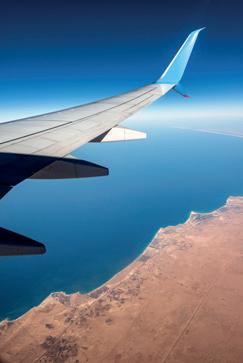




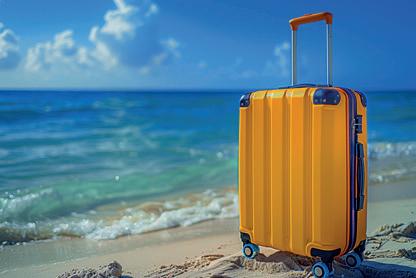


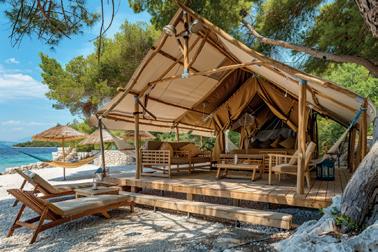


You incorporated the hotel into your family’s land, surrounded by thousands of olive trees that produce exquisite olive oil. Where did the idea come from to combine everything you’ve created, and what guided you throughout the realization of this project?
The idea was to connect the past with the present. Our village had the first hydraulic olive press in Dalmatia, and olive oil has been produced here for generations. The community has lived off agriculture and fishing (in fact, the oldest written document on the Adriatic about bluefish fishing comes from our island), and it boasts the tallest lighthouse and the longest bay on the Adriatic. We organize excursions for our guests and offer them the opportunity to eat freshly picked vegetables and fish caught that very morning – just like people have lived for thousands of generations.
Your hotel was designed by the great architect Nikola Bašić, the creative mind behind the Sea Organ, the Greeting to the Sun, and the memorial crosses on the Kornati Islands… What was your collaboration like, and how important are vision and intent when working on a project like this? Vision is everything when it comes to a project like this, because we weren’t building in Dubrovnik – or if we look a bit further, in Venice or Portofino – places that have had a tradition of luxury tourism for over a hundred years. We are yet to inform the world that we even exist. So the real question is: Why should anyone come here? Dugi Otok is much more than a bay where you drop anchor for half a day while sailing from Dubrovnik to Venice. In fact, some people advised us not to do this. And it wasn’t out of malice or envy, but genuine concern. That’s why I say again: in an environment like that, and in such a position where


SOME GUESTS USE HELICOPTERS FOR TRIPS, SOME RENT A BOAT WITHOUT A SKIPPER AND SAIL THEMSELVES, WHILE OTHERS GO DIVING
you’re kicking off the game already 2 goals down – vision and self-belief are everything. Academician Bašić shares that same life philosophy. We’re connected through the Kornati Islands, which for centuries fed both Murter and Dugi Otok – and were therefore a point of both collaboration and conflict over fishing rights He lives and breathes the island way of life. The project brief was clear: olive oil production, olive oil tasting, and whatever space remained – to create accommodation that meets the standards of The Leading Hotels of the World. What emerged was a cave. 11000 years ago, people on this island lived in caves – nothing has really changed at its core. Academician Bašić designed our “cave” by following the land’s contours, tracing the isohypses, without a single right angle in the supporting walls. We were blown away by the architecture, which remains the main initial reason our guests choose to visit. Add to that our full respect for construction laws – without playing any “maybe it’ll pass” games. Nikola Bašić was the logical choice for such a task. An architect with style, vision, environmental understanding, and just the right amount of dišpet (defiant spirit). Believe me – if he hadn’t believed in the project, if it didn’t challenge him personally—there is no amount of money that would have made him work with us.
Who are your most frequent guests, and how much attention do you pay to a personal approach for each of them? What does a typical week of vacation look like with you?
Our most frequent guests come from the US, while Croatians are in fourth place. Guests are attracted by the architecture and the olive oil, and then they discover the excellent nature and food, as well as top-quality massages. A typical week would look something like this: Day 1: on the property (indoor and outdoor pools); Day 2: excursion to Kornati National Park; Day 3: island tour: lighthouse, Strašna peć cave, Golubinka, Sakarun, Veli Žal; Day 4: Telašćica Nature Park, viewpoint, Slano Lake; Day 5: boat trip around Dugi Otok; Day 6: excursion to Kornati; Day 7: On the property Other guests come to enjoy a healthy lifestyle, as we focus on polyphenols and offer 3-, 5-, and 7-day longevity programs based on olive leaf tea, olive oil, and a skin treatment “pâté” at the SPA. All accompanied by organically produced food. Some guests use helicopters for trips to more remote locations and national parks, since our grounds include a heliport, and we are located at equal distance from Venice and Dubrovnik. Some guests rent boats without skippers and sail themselves every day in different directions, while others go diving with professional guides because Kornati National Park extends from Dugi Otok.
When we talk about Croatian tourism, especially luxury tourism, what would you highlight as its key advantages and disadvantages? Is there anything still missing to take a step forward, and who are our competitors in this segment? The advantages of luxury tourism are destination safety, an ecologi-
cally clean environment, fresh and ecologically controlled food, few accommodation units, and a personalized approach to each guest. The disadvantages are that, due to the high demands of environmental protection regulators, infrastructure development possibilities are limited. In this segment, our competitors are everyone who already exists, because this guest is the most educated and experienced. They are not just a wallet but a person who can clearly distinguish quality, which is also our advantage – that is, we need to offer what we do best and not try to sell what we are not.
How do you see the difference between Premium and luxury tourism?
An engineer is not the right person to give definitions. I think it’s important that the top level has no limits and cannot be confined by a definition. Perhaps it’s enough to say that we must always think about what we can do better tomorrow, every participant – from the person importing oranges for juice to the Minister.
We believe that someone with such vision, ideas, and success is thinking about some new projects as well. Can you share some of your future plans related to Villa Nai 3.3 or perhaps something entirely new?
Our plans are primarily focused on further enhancing the offer within Villa Nai 3.3. The helipad has been put into operation, and the solar system implementation – which will ensure energy independence – is in its final phase. Water supply through our own desalination system has already been fully achieved. This year, we’re further enriching our gastronomic offer, investing in the expansion of the SPA area, and developing new olive-based products, with an emphasis on natural cosmetics.


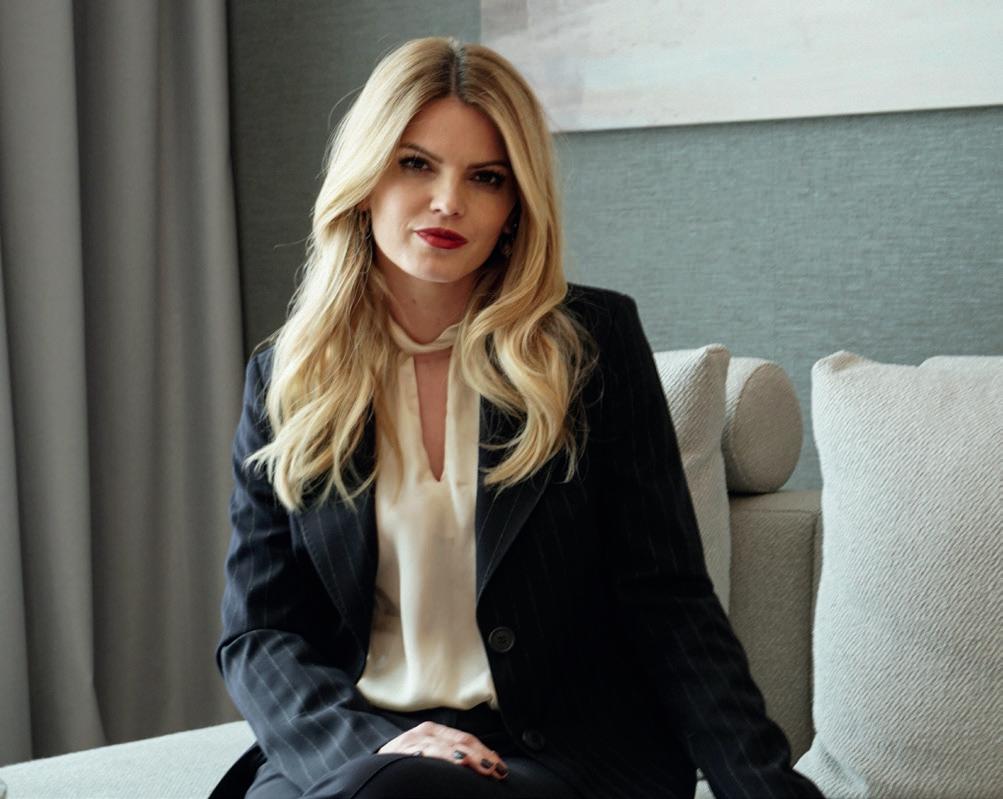
In tourism, investment in luxury facilities is growing, but outside that sector, we still lack sufficient high-quality business spaces and logistics infrastructure
MARTINA JURJEVIĆ CEO Westgate Group
Croatia needs a new generation of professionals and standards to support the development of top-tier hotels, business buildings, and more complex urban zones, says Martina Jurjević, CEO of Westgate Group, in an interview for Diplomacy&Commerce, Focus on Travel. “Our ambition is to lead change in both construction and asset management. The towers are a clear representation of Westgate’s vision — we want to create spaces that not only meet the market’s needs, but go beyond them. Spaces that inspire,” says Ms. Jurjević.
How would you rate the current real estate market in Croatia compared to the previous period, but also compared to similar markets in Europe?
properties. Compared to a decade ago, there’s significantly more activity from institutional investors, as well as a growing demand for sustainable and energy-efficient
THE BIGGEST CHALLENGE IS THE LACK OF AWARENESS THAT GOOD PROPERTY IS NOT JUST ONE THAT LOOKS BEAUTIFUL—BUT ONE THAT IS SUSTAINABLE, FUNCTIONAL, AND WELL MANAGED
The real estate market in Croatia is currently undergoing a phase of more mature development, particularly in the segment of commercial and tourism-related
buildings. It is no longer enough to build — we must create with vision. Croatia is still a market of great potential. From a European perspective, we have what many
don’t: stunning nature, a high quality of life, and strong appeal as a tourist destination. However, there is still room for improvement in areas such as infrastructure, digitalization of processes, and workforce availability. Compared to earlier periods, today’s investors are better informed, ambitions are higher, and the need for global standards is increasingly pronounced.
What’s the biggest challenge in asset management and how developed is that market in Croatia?
The main challenge is market fragmentation and a lack of standardized asset management practices. Many properties still lack professional management, which results in the gradual loss of asset value over time. The property management market in Croatia is still in a phase of development and education — both for investors and for end users. The biggest challenge is the lack of awareness that a valuable property is not just a beautiful one — it is one that is sustainable, functional, and professionally managed. Asset management is still too often seen as a cost, not as a value-adding activity. And that’s exactly where we see an opportunity for growth. Croatia needs a new generation of professionals and standards to support the development of top-tier hotels, business buildings, and complex urban areas. Our ambition is to lead that transformation.
What are the main differences across various parts of Croatia, and how difficult is it to access premium locations?
The differences between regions and cities in Croatia are significant – Zagreb and Split definitely lead in terms of investment opportunities, but each city has its own DNA. Zagreb has the pulse of a metropolis, Split blends tradition with modernity, while cities like Zadar and Rijeka have recently begun to reveal their urban potential. The locations in coastal areas and central zones of major cities are becoming increasingly scarce, and urban plans are often not aligned with the needs of modern investments. Moreover, the complexity and sluggishness of administrative procedures further complicate access to high-quality land. That’s why our focus is placed on strategic planning and early involvement in urban development processes – this requires years of preparation, strong relationships
GIVE YOUR ALL TO WHAT'S IMPORTANT, PROTECT YOURSELF FROM THE SUN.
Be like the players, visit your dermatologist and check with your pharmacist.

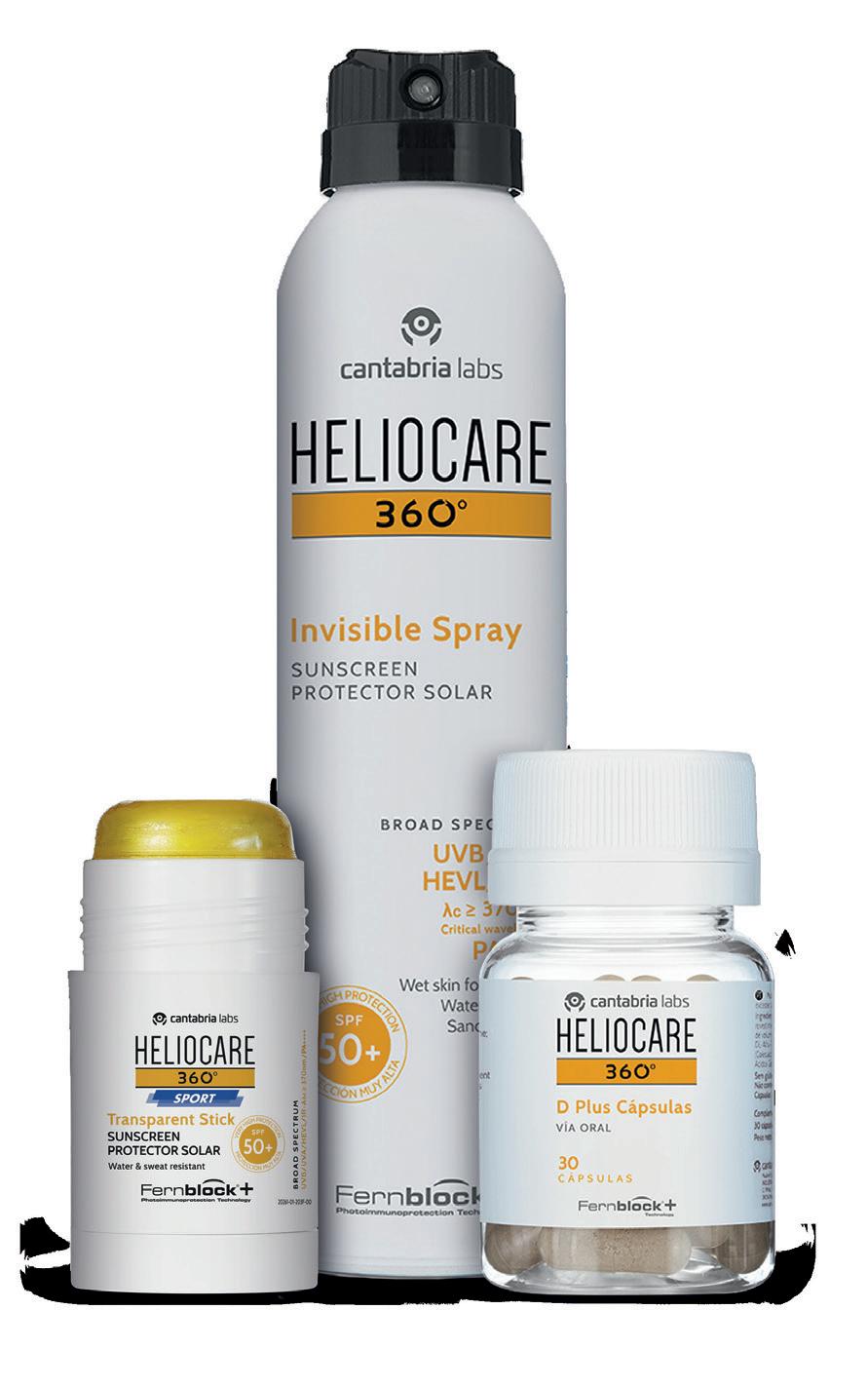
with local communities, and a deep understanding of space. At Westgate, we don’t just look for a location – we look for a context where a project can become a symbol. That’s where the beauty lies –in creating something where others don’t yet see an opportunity.
Which projects would you highlight, and what can we expect in the future?
Among all our projects, we would definitely highlight the Westgate Towers in Split. Designed by Otto Barić, these towers have permanently transformed Split’s skyline, giving it a contemporary edge.
Tower B – Dalmatia Tower is the tallest skyscraper in Croatia and home to the country’s first Marriott hotel. Precisely these towers are a clear reflection of Westgate’s vision—we want to create spaces that not only respond to the market but exceed its expectations. Spaces that inspire. As for the future, we currently have some smaller projects underway, but we’re also actively working on several large-scale developments. Our future plans include the development of multifunctional urban zones that combine commercial, residential, and public amenities. Collaboration with top architects and urban planners allows us to shape spaces that are built to last and carry a broader social value.

Do clients find you, or do you find them? How do you build trust?
In our sector, relationships are built on long-term trust and reputation. A large number of clients come through recommendations, but we also proactively research the market and build relationships with potential partners. Most often, we are approached by those
who are looking for more—more quality, more transparency, more vision. In every project, we insist on top-level execution. The key lies in a transparent approach, open communication, and delivering on our promises.
What are you most proud of regarding the Dalmatia Tower

project, and can we expect similar developments?
We are proud to have completed a project that is not only the tallest building in Croatia, but also a symbol of modern Split—a city that successfully blends history and modernity. Dalmatia Tower sets new standards in design, functionality, and sustainability. The project has paved the way for similar ambitious investments, and we certainly plan to continue in that direction—but always with an emphasis on adaptation to the local context and long-term sustainability. Yes, you can expect similar projects. But we will not repeat ourselves—every project must have its own identity and contribute to the space it inhabits.
How do you see the market in 5–10 years, and what are the challenges?
In the next 5 to 10 years, I expect further professionalization of the market, a greater focus on ESG criteria, and increasing integration of smart technologies into real estate. Challenges will include demographic changes, a shortage of qualified labour, and adaptation to climate requirements. It is crucial that cities and the state act as partners to investors—through more transparent and faster administrative processes, as well as through strategic spatial plans that encourage development rather than hinder it. Our responsibility is to create spaces that will serve the generations to come.

As the holiday season approaches, whether it’s sun and beaches or city lights calling your name, one thing is for sure: no one wants to stress over how to pay for a coffee, cab ride, or that perfect souvenir
Country Manager, Visa Croatia
The Visa Central Eastern Europe (CEE) Travel and Payment Intentions Study 20251 is showing more and more travellers from Croatia are embracing digital payments, with 8 in 10 choosing this payment method while holidaying abroad. With just a tap or swipe, you are on your way, without fumbling for change or worrying about foreign currencies. Using Visa credentials, you can pay fast and securely in 150+ million merchant locations across 200+ countries and territories, in more than 180 currencies. This way you can focus on what really matters: enjoying the moment. So, are you ready to make your travels a little lighter? Let’s dive into what the data says.
According to Visa study, this year 35% of Croatians intend to spend holidays abroad, with 95% of the respondents planning their getaway in a European country, and the top 3 destinations include Italy, Bosnia and Herzegovina and Austria. Although we mainly go on holiday to relax, rest, and read, but also sightsee or visit local attractions, the findings of the study are showing we are approaching
1 Unless another source is indicated, the data quoted in the above material comes from Visa CEE Travel and Payment Intentions Study 2025 which covered the following countries: Bulgaria, Croatia, Czechia, Hungary, Poland, Romania, and Slovakia. It was conducted by the research company GfK Polonia – a NIQ company in March 2025 on a representative sample of 1,000 respondents (18-65 years) in each of these countries.

this year’s holidays in a variety of ways, with two-fifths of Croatians identifying as experience seekers, prioritising discoveries and getting out of their comfort zone when traveling. Meanwhile, 1 in 5 take on the role of navigators, happily planning trips for themselves or a group, making sure things run smoothly.
BUT WHAT HAPPENS IF THE JOURNEY DOESN’T GO AS IT IS SUPPOSED TO?
– When we travel abroad for our holidays, we want to take a break from our daily routines and relax, and our survey shows over
1/3 of Croatian respondents stay relaxed and adaptable even when the trip does not go as planned, with only 12% feeling anxious faced with such a situation. This may be the result of proper preparation, good planning and the support provided by modern technologies – also including payment-related ones – ensuring your holiday continues to be pleasurable – said Renata Vujasinović, Country Manager, Visa Croatia. – At Visa, we help to give travellers peace of mind through a more seamless, more secure, and convenient payment experience both daily and during
holidays. Also, through cooperation with Visa, banks can provide customers with specialised travel-focused products and services, offering support and benefits throughout domestic and international journeys. These include discounts or more flexible spending control – she added.
And Croatian respondents are keen to benefit from such solutions when traveling, most frequently pointing to currency exchange services (22%), and foreign currency accounts (20%). One fifth is also happy to take advantage of mobile apps with features for travellers.



















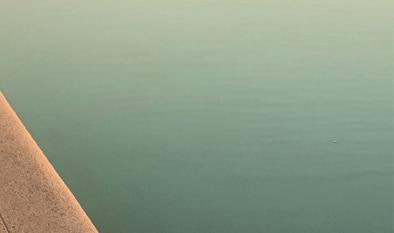


Whether it’s sandcastle days by the sea, snowy mountain adventures, quiet moments for two, or a touch of nature under the stars – we’re here to make the holiday you dream of come true.



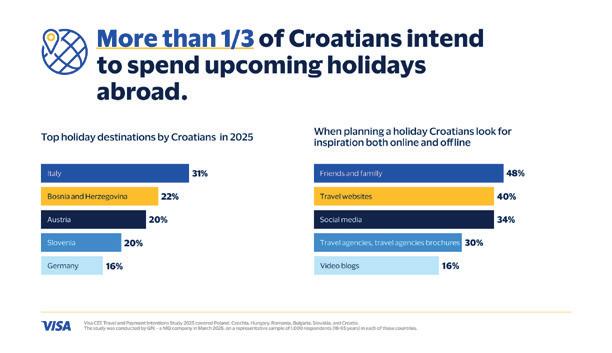



WHAT AMOUNT WILL WE DEDICATE TO OUR TRIP ABROAD?
While almost half of Croatian travelers still value the culture and natural beauty of their destination, their mindset is evolving. The focus is gradually shifting from pure deal hunting – still important to 17% – to getting the most out of the experience itself. For 27%, scoring a bargain is welcome, but not at the expense of comfort, safety, or good food. They’ll save where it makes sense but won’t hesitate to splurge on what truly matters. And with 40% planning their trips around meeting new people, exploring nature, and diving into local lifestyles – it’s clear: Poles are ready to invest in meaningful travel.
This season, we plan to spend around EUR 760 per person on a foreign trip – like Hungarians and Bulgarians. Most of that budget goes toward food, excursions, and entertainment. But spending isn’t
always a solo decision: 16% admit their travel budget is shaped by their companions’ habits, even if it means going beyond what they originally planned.
Regardless of how much we spend or what we buy, Visa’s study shows the uptake of digital payments in foreign travel among CEE tourists. Almost four out of five Croatians will pay with a card, smartphone or smartwatch at the destination, and this method is equally chosen by tourists from other countries in the region. One of the eagerly chosen ways to pay abroad is also through mobile wallets with 1/4 of consumers opting to choose this payment method. This comes with no surprise since customers’ expectations for seamless experiences are higher than ever. Mobile wallets, underpinned by Visa’s systems and technologies provide


both convenience and safety. Key technology here is called tokenisation and it provides an additional layer of security.
Visa study shows many of us get frustrated when traveling abroad by unexpected trip disruptions, so to protect yourself from payments related challenges during trips and beyond:
• Only shop from trusted and secure websites.
• Be wary of deals that seem too good to be true/ or /don’t get burned by hot deals on fake rental properties.
• Set mobile banking alerts.
• Use secure payment methods.
• Be cautious with emails and messages (phishing scams).
• Use strong and unique passwords and enable two-factor authentication (2FA).
• Monitor your bank and credit card statements.
• Protect your personal information.
• Avoid shopping on public Wi-Fi.
• Take in the sights but be aware of your surroundings. Avoid sticky fingers.
Case studies, statistics, research and recommendations are provided “AS IS” and intended for informational purposes only and should not be relied upon for operational, marketing, legal, technical, tax, financial or other advice. Visa Inc. does not make any warranty or representation as to the completeness or accuracy of the Information within this document, nor assume any liability or responsibility that may result from reliance on such Information. The Information contained herein is not intended as legal advice, and readers are encouraged to seek the advice of a competent legal professional where such advice is required.

www.podgoricacrnagora.hilton.com
podgorica.info@hilton.com


Sustainable development was the foundation of all project phases: from construction according to the highest ecological standards to the use of renewable energy sources and waste management systems
The newly opened Arba Resort 4* Valamar Collection is a premium all-inclusive family oasis on the island of Rab, nestled on the lush Kalifront peninsula, just five kilometers from the picturesque town of Rab. The resort features modern rooms and exclusive V Level family suites, all thoughtfully designed for comfort. Arba Resort 4* is the seventh resort in the Valamar Collection brand, renowned for its excellent service and extensive amenities. The resort can accommodate up to 654 guests and features several restaurants and bars, six swimming pools, a wellness & spa zone, and children’s play areas spanning 1,500 square meters. The new hotel, located in the heart of Suha Punta on the island of Rab, was built according to the highest standards of sustainable construction and represents a thorough reconstruction of the former Eva Hotel. Throughout the design and implementation process, special attention was paid to preserving the natural environment of the Suha Punta peninsula and enhancing the value of the centuries-old Kalifront forest. Sustainable development was the foundation of all project phases: from construction according to the highest ecological standards to the use of renewable energy sources and waste management systems. Every effort was made to protect the environment, and more than 100 local companies participated in the project. The hotel utilizes renewable energy sources, while ecological considerations have been integrated at every stage of construction – from the selection of materials to energy and water management systems. The resort was built entirely in accordance with the principles of sustainable develop-
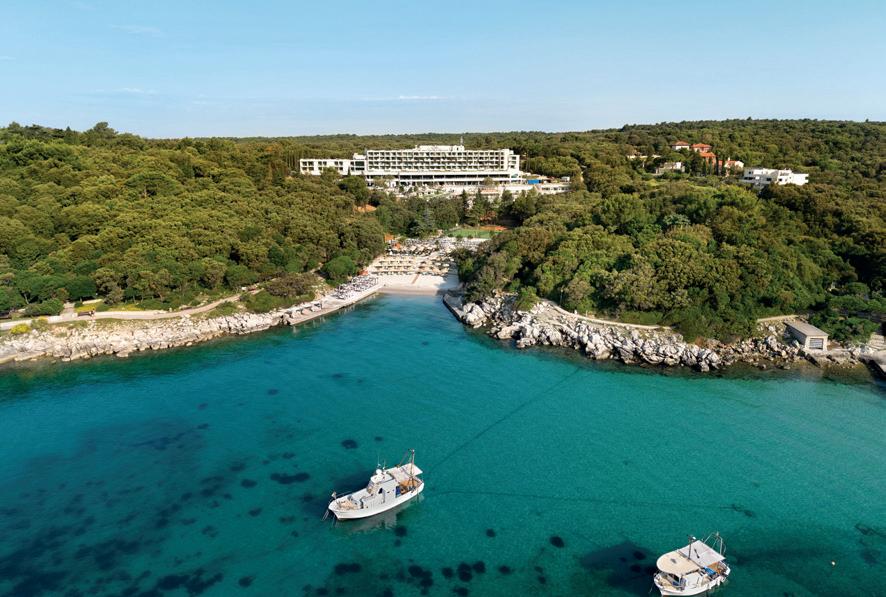
IT IS ESTIMATED THAT, THROUGH TAXES AND CONTRIBUTIONS ASSOCIATED WITH ARBA RESORT, IMPERIAL RIVIERA WILL CONTRIBUTE APPROXIMATELY EUR 5 MILLION ANNUALLY TO PUBLIC BUDGETS, OF WHICH NEARLY EUR 1 MILLION PER YEAR WILL GO TO LOCAL GOVERNMENT BUDGETS, PRIMARILY THE TOWN OF RAB
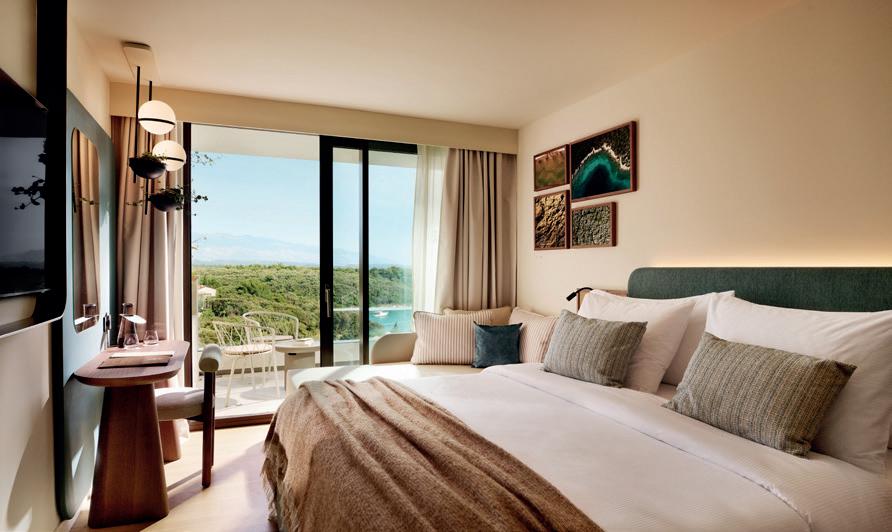
ment, with special emphasis placed on contributing to the local community through the development of public infrastructure, the creation of new jobs, and active support for island projects and initiatives. In summary, this investment stands as a clear example of modern, responsible tourism that supports the sustainable development of the destination, enhances the quality of life for local residents, and preserves the natural values of Rab Island.
The opening of this resort marked the completion of the first phase of the largest development project on Rab, establishing the island as a leading destination for family vacations in Croatia. The entire investment, totaling EUR 82 million, which will be finalized during the next year, is part of a partnership between Valamar and AZ Fond at Imperial Riviera, where cumulative investments in the development and expansion of the tourism portfolio have reached EUR 271 million.
“In addition to delivering long-term solid returns for our members and further improving Imperial Riviera’s business results, it is very important for us at AZ that this investment contributes to the ongoing sustainable development of the island of Rab and the destination as a whole, creates new jobs for local residents, and helps keep young people on their island,” said Kristijan Buk, President of the Management Board of AZ Pension Funds.
The hotel places a strong emphasis on local products and experiences, actively promoting the authentic identity of Rab. For instance, the restaurant highlights Rab’s traditional štokalj fish and lentils, the lobby serves the famed Rab cake, and the wellness area features natural cosmetics crafted by the Benedictine nuns of the St. Andrew the Apostle Monastery in Rab – a unique example of collaboration with the local community.
Alongside its impressive accommodation facilities, the resort offers a wide array of new amenities accessible to both the local community and visitors: well-maintained beaches, sports courts, water sports zones, a new bike center, and numerous recreational and educational trails and walking paths near the hotel on the Suha Punta peninsula.
It is estimated that, through taxes and contributions associated with Arba Resort, Imperial Riviera will contribute approximately EUR 5 million annually to public budgets, of which nearly EUR 1 million per year will go to local government budgets, primarily the Town of Rab. As one of the leading employers on the island, Valamar provides high-quality jobs, professional development opportunities, and the chance for residents to find employment without leaving Rab.
“Nine years ago, AZ Pension Funds and Valamar recognized the value and potential of Imperial and together embarked on building one of the most successful domestic investment stories. We believe that this kind of partnership model can serve as an example of successful cooperation between private and institutional capital, ensuring long-term returns, quality jobs, and the preservation of what makes Croatia unique – its coastline and local identity,” stressed Željko Kukurin, President of the Management Board of Valamar.
Rab is also known as the “island of happiness” thanks to its unspoiled nature and numerous stunning beaches. The resort is situated on one of the island’s most breathtaking locations, surrounded by dense forests of holm oak and pine trees and the crystal-clear waters of the Adriatic Sea. It features 208 luxurious rooms and
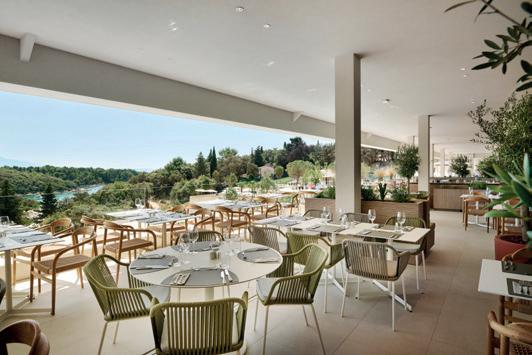

CHILDREN WILL DISCOVER A TRUE PARADISE HERE –SPECIFICALLY, THE MARO WORLD FACILITIES AT ARBA RESORT, WHICH ARE INTENDED FOR FAMILIES WITH CHILDREN UP TO 12 YEARS OLD AND SPAN MORE THAN 1,500 SQUARE METERS
suites of various types, with a total capacity for 639 guests. The design of the rooms is inspired by the island itself, i.e., the sea, the forest, the sand, and the stone.
“Arba Resort is much more than just a hotel –it was envisioned as a place where nature, local tradition, and modern comfort come together to create a unique setting for relaxation and quality family time” explained Damjan Dumić, Director of Arba Resort 4*, Valamar Collection.
As this is a family destination, special care has been taken to design facilities for the youngest guests. Children will discover a true paradise here – specifically, the Maro World facilities at Arba Resort, which are intended for families with children up to 12 years old. These facilities cover more than 1,500 square meters and include spaces for unstructured play in an innovative interactive zone. There is also Maro Smart Play, where Maro the Mascot brings stories about the destination to life. The entire area is designed to blend STEM concepts with imaginative activities. Among other features, guests can enjoy video game zones, an evening entertainment program, a cinema, and sports activities for children, as well as educational workshops, painting, cooking, nature walks, horseback riding, and more. In short, everything is designed so that even the youngest guests can fully enjoy themselves, have a great time, and learn something new along the way.
The resort offers six swimming pools, a variety of sports facilities, and a sandy beach located in a picturesque cove with crystal-clear, emerald waters – ideal for relaxation and enjoyment.
Arba Resort is the perfect place for all fans of active vacations, situated next to the Capo Fronte peninsula, which is rich in cycling trails of all kinds: trekking, mountain bike, and familyfriendly routes. The Capo Fronte Discovery Trail stands out as particularly suitable for family rides through unspoiled nature. Within the resort, guests will find a modern bike center with a wide selection of bicycles, an attractive paved pump track, and a children’s cycling trail. Guests also have access to a fitness center that is open 24 hours a day, as well as group activities such as yoga, running, and aqua fitness, and sports courts for tennis and soccer.
Guests can unwind at the Balance Mediterranean Spa, which features jacuzzis, massages, saunas, and natural cosmetics from certified local producers. The wellness area of Arba Resort spans an impressive 800 square meters and includes a comprehensive spa menu with several types of saunas, relaxation rooms, a Vitality Bar, treatment rooms, and a private spa corner. A highlight of the spa experience is the selection of exclusive treatments inspired by island living, utilizing locally grown herbs, honey, and sea salt to provide guests with an authentic experience connected to the natural and cultural heritage of the island.
The artworks that grace Arba Resort were specially commissioned and created in collaboration with academically trained Croatian artists, including Miran Šabić, Ana Sladetić Šabić, Lorena Almaši, Mihaela Lukšić, Natalija Borčić Peuc, Sanja Jureško, Krešimir Katušić, Mako Melcher, Diana Trohar, Marko Dajk, and Petar Popović. Their aim was to visually capture the identity of the resort. The selected painters, sculptors, and photographers developed artworks and carefully curated them to harmonize with the space, further highlighting the brand’s story and evoking the textures, structures, and experiences that the island’s nature offers to its visitors.
Sustainability is woven into the very DNA of the resort, as demonstrated by several initiatives: food waste is composted on-site, charging stations for electric vehicles are available to guests, beach landscaping has been carried out with maximum preservation of vegetation and the natural shoreline, and the green spaces within the resort feature native Mediterranean flora.

In a time when we are exposed to numerous challenges of modern life – from information overload to pervasive digitalization and stress – health becomes a key value, and prevention a necessity. Visual perception and eye protection take centre stage in this context, since vision is not just a sense – it is our window to the world. At Zepter International, a company that has been building its mission for over three decades on the intersection of science, technology, and health, we have created an innovative response to the challenges of the modern age: Hyperlight Eyewear glasses.
BEHIND THE LENS: THE NOBEL PRIZE AS THE FOUNDATION OF INNOVATION
Hyperlight Eyewear is based on the application of Fullerene C60, a revolutionary molecule for whose discovery three scientists – Harold Kroto, Richard Smalley, and Robert Curl – were awarded the Nobel Prize in Chemistry in 1996. This unique carbon compound possesses exceptional biophysical properties: it is antioxidant, stabilizing, and regenerative. In the context of Hyperlight glasses, the fullerene layer on the lenses not only filters harmful UV and HEV (blue) rays but also transforms them into a light spectrum that promotes health: the green, yellow, orange, and red parts of the electromagnetic spectrum. Thus, the glasses do not merely provide passive protection, but they actively
support homeostasis in the body – they harmonize brainwaves, stabilize the endocrine system, and regulate mood and circadian rhythm.
BENEFITS OF HYPERLIGHT EYEWEAR: MULTIDIMENSIONAL IMPACT ON HEALTH
Hyperlight Eyewear acts simultaneously on multiple levels:
• Visual acuity and perception – thanks to eight ionic coatings made with IonCoat K+ technology, reflection is reduced to less than 1%, which lessens eye strain and enhances image contrast. This is especially important for professionals, diplomats, scientists, artists – anyone who spends hours in front of a screen during the day.
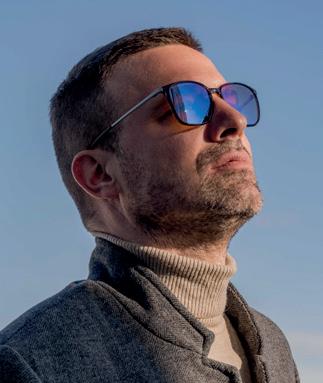
These glasses are not a fashion accessory, but a scientifically based solution that protects, optimizes, and regenerates – from the level of the eye to the neurological functions of the brain
• Neurological functionality – the filtered light affects the pineal gland and hypothalamus, key glands for hormone regulation. It stimulates the production of serotonin and melatonin, hormones responsible for good mood, biological rhythm, and deep, restorative sleep.
• Cognitive clarity and focus –studies show that prolonged exposure to blue light reduces concentration and causes mental fatigue. Hyperlight Eyewear restores the user’s capacity for focus, creativity, and emotional stability.
• Eye health – protects against photo-oxidative stress, dry eyes, digital eye strain, blurred vision, and digital eye syndrome symptoms.
• Prevention of long-term damage – shields the eyes from macular degeneration, cataracts, and degenerative changes caused by UV radiation.

IN A TIME THAT REQUIRES CLARITY, BALANCE, AND VISION – CHOOSE GLASSES THAT ARE NOT JUST LENSES AND FRAMES, BUT AN ALLY FOR YOUR HEALTH
The short answer would be: everyone. But to be more specific, I would say: for people who use computers, tablets, and smartphones daily (especially managers, students, programmers, journalists, architects…), as well as professionals exposed to long hours of artificial lighting (office environments, conference halls, media lighting). I would also mention frequent travellers and individuals who often change time zones and disrupt their circadian rhythm. Naturally, these glasses are ideal for people with sensitive eyes, allergies, insomnia, or migraines. Or, to put it very clearly – for everyone who values prevention, longevity, and clarity of perception.
As the CEO of Zepter Croatia and someone who has lived this philosophy for years, I deeply believe that health is not a luxury – it is a basic human right. Hyperlight Eyewear perfectly embodies our mission: to offer people technological tools that are functional, effective, and at the same time, aesthetically outstanding.
In a time when we speak daily about sustainability and resilience, innovations like these are the right answer: long-term, scientifically validated, and aimed at preserving human health as a whole – because investing in vision means investing in health.
Our users come from various sectors – from diplomacy and politics to science, the arts, and sports. What unites them is an awareness of the importance of prevention, optimization, and longevity. That is why I am proud to say that Hyperlight Eyewear is more than just a pair of glasses. It is a symbol of a paradigm shift – from passive protection to active regeneration.
ASPA-Fernblock®, a technology Heliocare 360 is based on, is a breakthrough in photoprotection, offering the most advanced SPF technology yet
Whether you spend hours outdoors or simply want daily sun protection with extra skin health benefits, this revolutionary formula is designed to protect, repair, and enhance your skin in ways traditional sunscreens cannot.
For years, HELIOCARE 360 has been at the forefront of advanced photoprotection with Fernblock®️ technology – a powerful antioxidant extract derived from the Polypodium leucotomos fern, clinically proven to support DNA repair and protect against photoaging.
This season, Cantabria Labs presents the new, improved ASPA-Fernblock®️ technology, which combines Fernblock®️ with rooibos extract (Aspalathus linearis) to create the OptiD Effect, a superior mechanism that preserves and optimizes the function of vitamin D receptors in the skin.
THE STORY BEHIND ASPA-FERNBLOCK®
ASPA-FERNBLOCK®️ technology is based on plants, which need sunlight to survive and mechanisms to defend themselves from the damage that the sun can cause. Cantabria Labs has therefore begun a search across the planet to find the plants that best complement the classic sun protection we use. The result is Heliocare.
The first great step taken by Cantabria Labs was to choose the Polypodium leucotomos extract, Fernblock®️. For over 20 years, Cantabria Labs studied and published the multiple ben-


efits it provided for Heliocare topical and oral formulas. Today, this legacy is continued with the addition of Aspalthus linearis extracts, which work together with Fernblock®️ protective mechanisms to ensure greater protection.
ASPALATHUS
LINEARIS AND POLYPODIUM LEUCOTOMOS
ASPA-FERNBLOCK®️ technology is based on the combination of Aspalathus linearis, (a shrub native to the Cederberg region in South Africa, recognized for its beneficial properties for the skin, including its antioxidant effect). and the tropical fern Polypodium leucotomos, native to Central America (and which developed a self-defence and repair mechanism against the sun).
ASPA-FERNBLOCK® AND VITAMIN D RECEPTORS
Powered by the revolutionary OptiD Effect, ASPA-Fernblock®️ not only shields against UV and oxidative damage but also helps preserve vitamin D function, a critical component in skin repair, collagen production, and immune defence.
WHAT EVERYONE KNOWS:
• Maintaining healthy levels of vitamin D in the blood is essential for maintaining healthy bone structure and a functioning immune system.
• We can obtain vitamin D orally, although the main source comes from the metabolism of skin cells during sun exposure.
• Excessive solar radiation can cause burns and skin cancer.
• Having good levels of Vitamin D in the blood is essential to be less likely to have certain skin diseases such as Psoriasis, Dermatitis, or Skin Cancer.
• Our cells can produce the required Vitamin D with sun exposure of between 10-20 minutes, depending on the geographical location, skin colour and time of year.
• Sunscreens do not prevent your skin from synthesizing Vitamin D.
• Vitamin D also has many other functions in cells such as regulating their repair, but to do so they must bind to the cellular Vitamin D receptor (VDR).
• Excessive radiation produces oxidative stress that triggers the reduction of vitamin D receptor levels (VDR).
• Low VDR levels reduce your cells’ ability to repair themselves, making you more prone to developing skin cancer.
PRODUCTS WITH NEW ASPA-FERNBLOCK TECHONOLOGY:
• HELIOCARE 360° Sensation SPF50+ Advanced, full-spectrum SPF50+ facial sunscreen with an ultralight, matte finish.
• HELIOCARE 360° Advanced Gel Body SPF50+ The first body sunscreen that prevents and repairs sun damage and enhances the functionality of vitamin D in the skin.
• HELIOCARE 360° Water Gel SPF50+ This lightweight, water-based gel absorbs quickly, leaving a satin finish. Its advanced hydration system locks in moisture, and it creates a protective barrier against pollution.
• HELIOCARE 360° Age Active Fluid SPF50
A light, hydrating, tinted formula offering full-spectrum protection. Features a triple anti-ageing complex to smooth lines and plump skin, while a ‘soft focus’ effect reduces fine lines. Its ‘second skin’ technology locks in moisture and shields against pollution.
• HELIOCARE 360° Pigment Solution Fluid SPF50+
This light, silky fluid offers full spectrum protection while helping to prevent and reduce hyperpigmentation with a unique Depigmenting System.
• HELIOCARE ULTRA-D Oral Capsules
HELIOCARE Oral Supplements offer extra protection against sun damage using ASPAFernblock® Technology, vitamin D, and other skin-boosting ingredients.
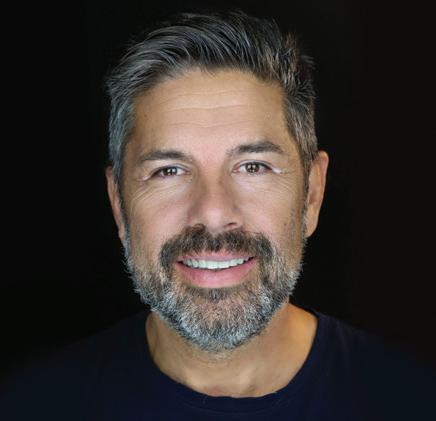
RONALD BRAUS
Opera singer and organizer of the Rovinj Art & More Festival
Opera star and founder of the Rovinj Art & More Festival, Ronald Braus, announces the seventh edition of the event that combines opera, theatre, visual arts, and film. He talks for Diplomacy & Commerce about what it’s like to be both an artist and an entrepreneur, revealing insights he gained after health challenges, and discusses the role of art in all of this.
As a successful opera singer, how would you describe the classical music scene in Croatia, and what is it lacking compared to developed countries we look up to?
The classical music scene in Croatia boasts a wealth of talent but still lacks systematic and continuous support – especially when it comes to the independent scene. Stronger and more concrete backing from local authorities, cultural institutions, and sponsors is needed to enable artists to work year-round, not just during the season. Compared to culturally developed centres like Vienna or Milan, too much here still relies on the enthusiasm of individuals rather than strategic investment in music culture and audience education. However, gradual progress is happening – more and more festivals and initiatives aim to bring classical music closer to the wider public, which gives hope. Personally, besides organizing the Rovinj Art & More festival, I am very active as a soloist – I perform with Opera b.b. Zagreb on many stages across Croatia and abroad. We are currently preparing a series of important guest performances, and we eagerly anticipate announcing a particularly significant transatlantic engagement. This proves that the domestic music scene has much to offer beyond its borders – it just needs space and belief in its potential.
Music and art are not just a job, but a way of healing and understanding the world
How important do you think it is to enrich music through interpretation, genres, and melodies? It seems this is your main focus…
While I am deeply devoted to classical opera, I am not afraid to experiment, seek new interpretations, and blend different musical styles. This is not just a way to refresh the performance but also a bridge that connects different generations and cultural layers. This way, the audience is not trapped in the past but feels that music still speaks about us today. This synthesis of tradition and modernity is one of my artistic goals.
The seventh edition of the Rovinj Art and More festival is coming soon. What can the audience expect this year?
This year, the festival brings a rich program that combines opera, theatre, visual arts, and film. We began with an overture in the historic setting of the Franciscan cloister with a concert titled “Opera and More.” The grand opening on July 2nd is reserved for the gala concert “Viva Verdi,” performed by the Rijeka Symphony Orchestra and soloists of the Ivan pl. Zajc Croatian National Theatre Opera, under the
baton of conductor Valentin Egel. Art lovers can explore an exhibition of drawings by Bruno Mascarelli at the Spirito Santo Hotel. The theatre scene is also strongly represented – with performances such as “Luka Modrić – My Game,” the binaural play “Ana Katarina,” and guest appearances by renowned theatre companies Kerekesh and Planet Art with the plays “Iva i Gloria” and “The Last Freud Session”. In the musical segment, highlights include concerts by top artists like violinist Stefan Milenković and organist Pavel Mašić. I will personally perform in mid-August at a concert titled Ronald Braus and Guests. This year, the event marks its 25th anniversary, which I am particularly proud of. The festival concludes with the screening of the film “Ljeto kad sam naučila letjeti” (Engl. The Summer I Learned to Fly), which has generated great interest, followed by meetings with the filmmakers and actors. The program is designed for everyone who wishes to experience art in all its forms – this is our invitation to dialogue, understanding, and enjoyment. I especially want to highlight the play “Carlotta Grisi– od Vižinade do viječnosti” (Engl. Carlotta Grisi – From Vižinada to Eter-

nity), created at the festival, which after its debut has been performed across Europe and continues to live on as a successful artistic project – a true testament to the strength and longevity of the Rovinj Art and More festival.
How challenging is it to organize a festival like this? What drives and motivates you?
Organizing a festival is a daily struggle and a test of endurance. From securing funding and partners, coordinating artists and technical execution, to ensuring promotion and audience satisfaction – every detail matters. Yet behind all the challenges lies a shared goal: to create a place where art lives and breathes, and where everyone feels comfortable and welcome. The festival’s vision is to become a lasting brand that connects culture and tourism, but also a community that grows and bonds through art. With its historical and natural beauty, Rovinj is the perfect setting for this idea. I’m glad that the director of the Rovinj Tourist Board, Ms. Odete Sapač, was among the first to recognize and support the concept.
You spoke publicly about your health challenges. How has that changed you, and what message do you have for readers?
I went through a very demanding phase after a stroke, when I faced uncertainty and fear. Thanks to excellent doctors and the support of my family, I was given a new chance at life. This experience taught me how important it is to listen to your body, slow down, and appreciate every moment. My message to everyone is to never forget the importance of health and to recognize that art can be a powerful ally in this – because it connects us, fulfils us, and gives life meaning. In today’s fast-paced world, this is a message we all need to hear.
For business guests, Hilton offers some of the largest conference facilities in Podgorica
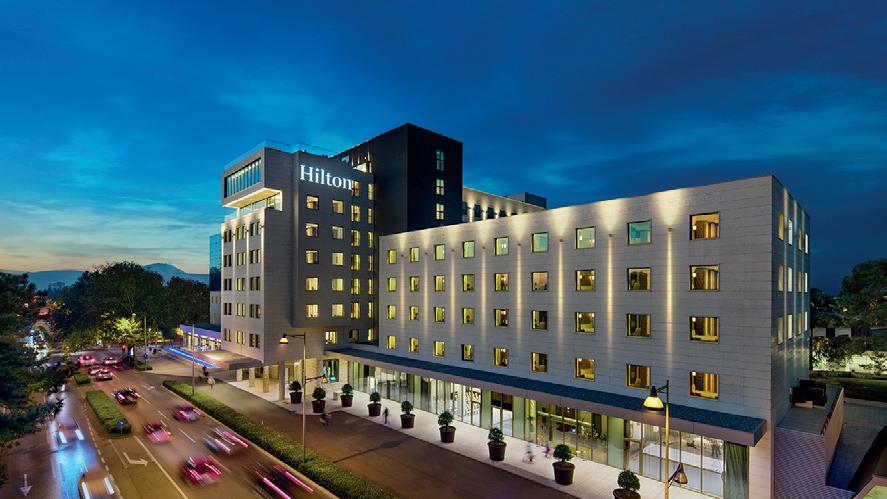
Located in the heart of Montenegro’s capital, surrounded by the greenery of city parks and just a few minutes’ walk from key governmental, administrative, and cultural institutions, Hilton Podgorica Crna Gora is a perfect blend of modern elegance and local tradition — making it an essential stop for both tourists and business travelers alike.
Opened in 2016, Hilton Podgorica represents a contemporary interpretation of the former Hotel Crna Gora, a city landmark since 1953. While preserving the spirit of the original building, Hilton has added all the amenities and comfort of the 21st century, quickly becoming synonymous with luxury and impeccable service.
The hotel offers 180 elegantly furnished accommodation units, including rooms of various categories, suites, and a luxuriously equipped Presidential Suite.
For business guests, Hilton features some of the largest conference facilities in Podgorica. Five conference rooms, with a total area of 780 m², are ideal for hosting events of all sizes —

from private meetings and celebrations to international conferences. The Crystal Ballroom is the largest, with 420 m² of space and a capacity of up to 500 people.
Culinary highlights include the Crna Gora restaurant, which serves carefully crafted local and international dishes with a focus on seasonal and authentic Montenegrin ingredients.
On the 8th floor, guests can enjoy the Sky Bar, offering a spectacular panoramic view of the city along with a rich selection of cocktails and light bites.
Thanks to its warm atmosphere and diverse offer, Gradska kafana is a favorite gathering spot not only for hotel guests but also for locals.
On the hotel’s 6th floor, the Executive Lounge offers guests an exclusive space for both relaxation and work. Visitors to the Executive lounge enjoy numerous perks, including complimentary light snacks and a wide selection of beverages throughout the day. It’s an ideal place for informal meetings, unwinding after a busy day, or simply enjoying the peaceful atmosphere paired with spectacular city views.
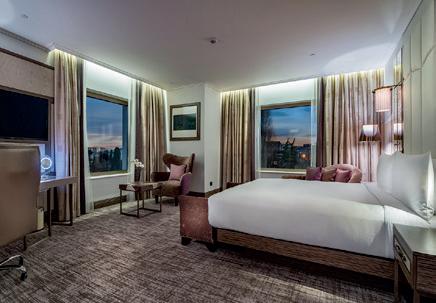
In addition to its rich offer for business travelers, the hotel also provides a range of recreational and relaxation amenities, striking the perfect balance between work and leisure.
The Doclea Spa Center, one of the largest in the city with an area of 1,300 m², is designed according to the latest wellness trends. The spa features an indoor swimming pool, fitness center, a 6-person hydro-massage jacuzzi, Finnish and bio saunas, and multi-sensory experience showers offering visual, audio, temperature, and aromatic effects.
After a long day of work, guests can enjoy a variety of cosmetic treatments at the exclusive beauty salon Lilit House.
For golf enthusiasts, Hilton Podgorica also features a state-of-the-art Golf Simulator, offering a realistic playing experience on some of the world’s most famous courses. Regardless of the weather, guests can refine their swing and technique in the comfort of the hotel — ideal for recreation, practice, or socializing in a sporty setting.
Family visits to Hilton Podgorica are made even more memorable with the addition of the enchanting Kosmos Kids’ Playroom, designed to spark imagination and bring joy to the youngest guests. The space is fully equipped with educational, creative, and entertaining content, all under the attentive care of trained professional staff.
Keeping up with modern trends and environmental responsibility, the hotel is also equipped with electric vehicle charging stations. Guests can travel with peace of mind, knowing they have access to safe and efficient charging right in the city center. This convenience further reflects the hotel’s commitment to sustainable development and guest comfort. Whether you’re in town for business, leisure, or a special event, the dedicated team at Hilton Podgorica is committed to making your stay flawless — from the very first moment to the last.


These are the kind of once-in-a-lifetime moments offered by priceless.com – a platform of exclusive experiences designed for Mastercard cardholders
When we imagine the perfect summer getaway, we think of moments etched forever in our memory – a sunrise over the old town of Dubrovnik with not a soul in sight, dinner under the stars after a day of sailing the Adriatic, or a glass of exquisite wine overlooking the rolling vineyards of Slavonia.
Imagine walking the ancient city walls of Dubrovnik while the city still sleeps. As the first rays of sun light up the terracotta rooftops, you take in the timeless beauty of the Old Town in a silence so rare, it feels almost surreal. With an expert guide at your side, you’ll uncover hidden alleyways, untold stories, and age-old legends that these ancient walls have guarded for centuries.
But the journey doesn’t end with the walk. This exclusive tour, created especially for Mastercard cardholders, continues with a gourmet experience at one of the city’s top Mediterranean restaurants. The day concludes with a thoughtfully curated goodie bag filled with local delicacies – a keepsake of memories that will linger long after you’ve left. Even if you’ve visited Dubrovnik before, this is a chance to see it with new eyes.
For those seeking romance, adventure, and culinary excellence, a three-day sailing trip along the Adriatic offers the ultimate summer escape. Departing from Split or Trogir, the journey takes you to the unspoiled beauty of Šolta and the Blue Lagoon – where days are spent swimming, snorkeling, and paddleboarding in crystal-clear waters.


Come sunset, unwind with a glass of fine wine, Dalmatian prosciutto, cheese, and olive oil as the horizon glows in unforgettable hues. The next day, sail to Brač to explore the secluded Blaca Hermitage, before continuing to Hvar, where a gourmet dinner and a tour of the UNESCO-protected Old Town of Stari Grad await. Your final day is reserved for peaceful sailing – a slow farewell to the luxury of life at sea.
When thinking of luxury holidays, Slavonia might not be the first place that comes to mind – and that’s exactly what makes it special. For those who discover it, the true luxury lies in the serenity of a breakfast filled with homemade bread and local delicacies, the scent of fresh
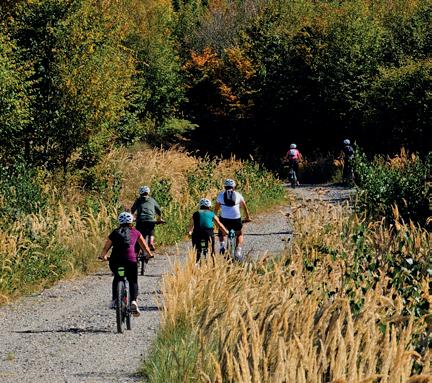
air, and the gentle breeze as you relax in a private jacuzzi or ride a quad through the forests of Papuk – Croatia’s first UNESCO Global Geopark.
Over three days, guests will visit two exceptional wineries – Galić and Soldo – to taste some of the region’s finest labels. Dinners at local favorites Zlatni Lug and Slavonska Kuća offer an authentic journey into Slavonia’s rich culinary heritage. For the adventurous, there are massages, off-road excursions, and rock climbing experiences with professional guides. Together, these moments position Slavonia as Croatia’s rising star in boutique travel.
Today, travel is about more than just getting away. It’s about the stories we tell, the emotions we carry, and the experiences that shape us. In a world where we crave the authentic, the platform priceless.com in partnership with Mastercard offers exactly that – unique journeys far from the ordinary.
If you’re ready to see Croatia in a new light –at dawn above Dubrovnik, on the waves of the Adriatic, or in the tranquil embrace of a Slavonian vineyard – and to enjoy it all through a premium lens, all you need is your Mastercard and a click on priceless.com.


